Unveiling Buddhist Marvels and Springtime Splendors of Northern Pakistan
#1
Original Poster
Join Date: Sep 2014
Posts: 11
Likes: 0
Received 0 Likes
on
0 Posts
Unveiling Buddhist Marvels and Springtime Splendors of Northern Pakistan
We arrived in Islamabad by Thai Airways at 10 pm, a fine airline that whisked us across the skies with comfort. We were warmly received at the airport by our local group operator, Vertical Explorers Tours Pakistan, whose guide greeted us with bouquets of flowers and helped us with his team with our luggage. He escorted us to a van that took us to our hotel, the Marriott Islamabad, a splendid establishment in the heart of Islamabad, that boasted of spacious rooms, modern amenities, and stunning views of the Margalla Hills.
The next morning, we set off to explore Taxila, a place of such historical and archaeological significance that it made us feel like Indiana Jones. We visited the Taxila Museum, which housed a dazzling array of sculptures, coins, pottery, jewelry, and other artefacts from the ancient Gandhara civilization. We were amazed by the skill and artistry of the craftsmen who created these objects, and the diversity and richness of the culture that they represented. We learned that Taxila was founded in the 7th or 6th century BCE, and was a major centre of Buddhism, education, trade, and art. It was also a strategic location that witnessed the invasions of Alexander the Great, the Mauryan emperor Ashoka, the Indo-Greeks, the Indo-Scythians, the Kushans, and the Huns.
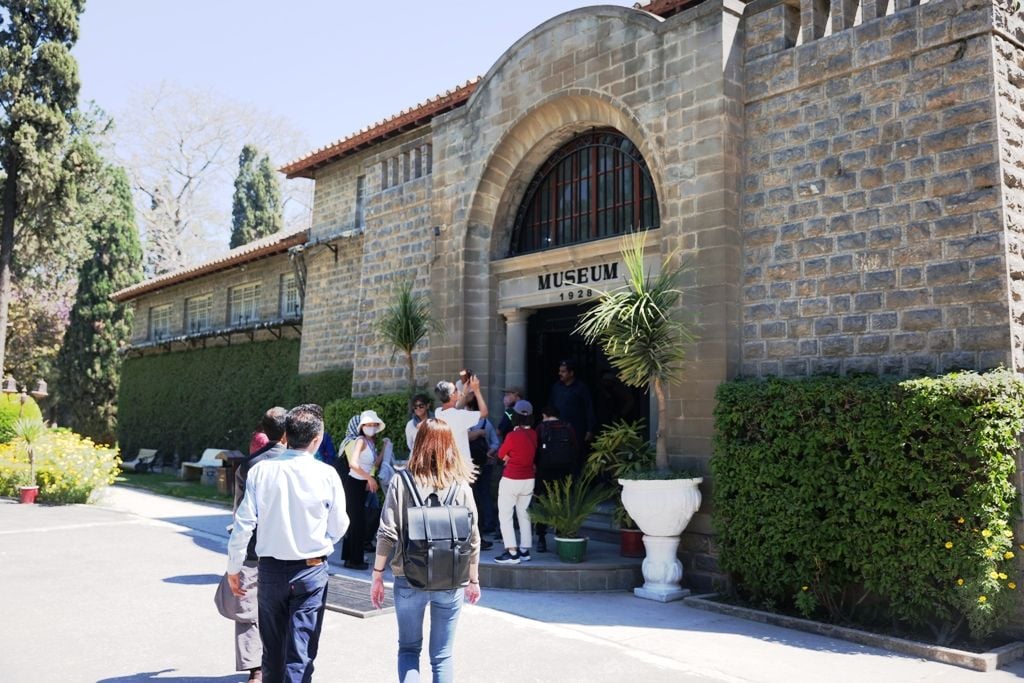
Taxila Museum
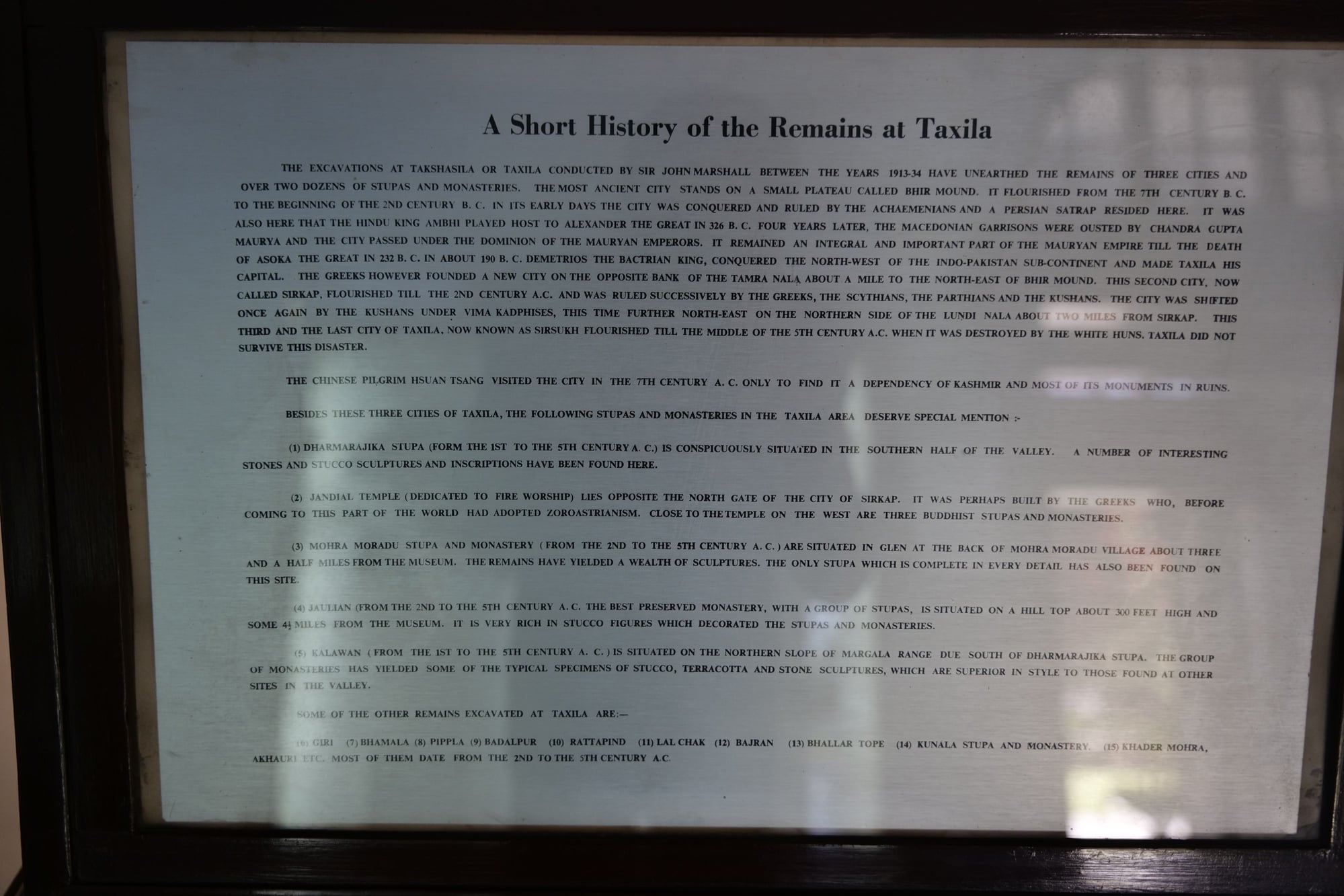
Taxila museum

taxila museum
We then proceeded to Dharmarajika Stupa, a circular structure that looked like a giant cake with a cherry on top. It was built by the great emperor Ashoka in the 3rd century BCE to enshrine the relics of the Buddha. We admired the intricate carvings and decorations on the stupa and the surrounding chapels, and felt a sense of awe and reverence for the ancient Buddhist culture.
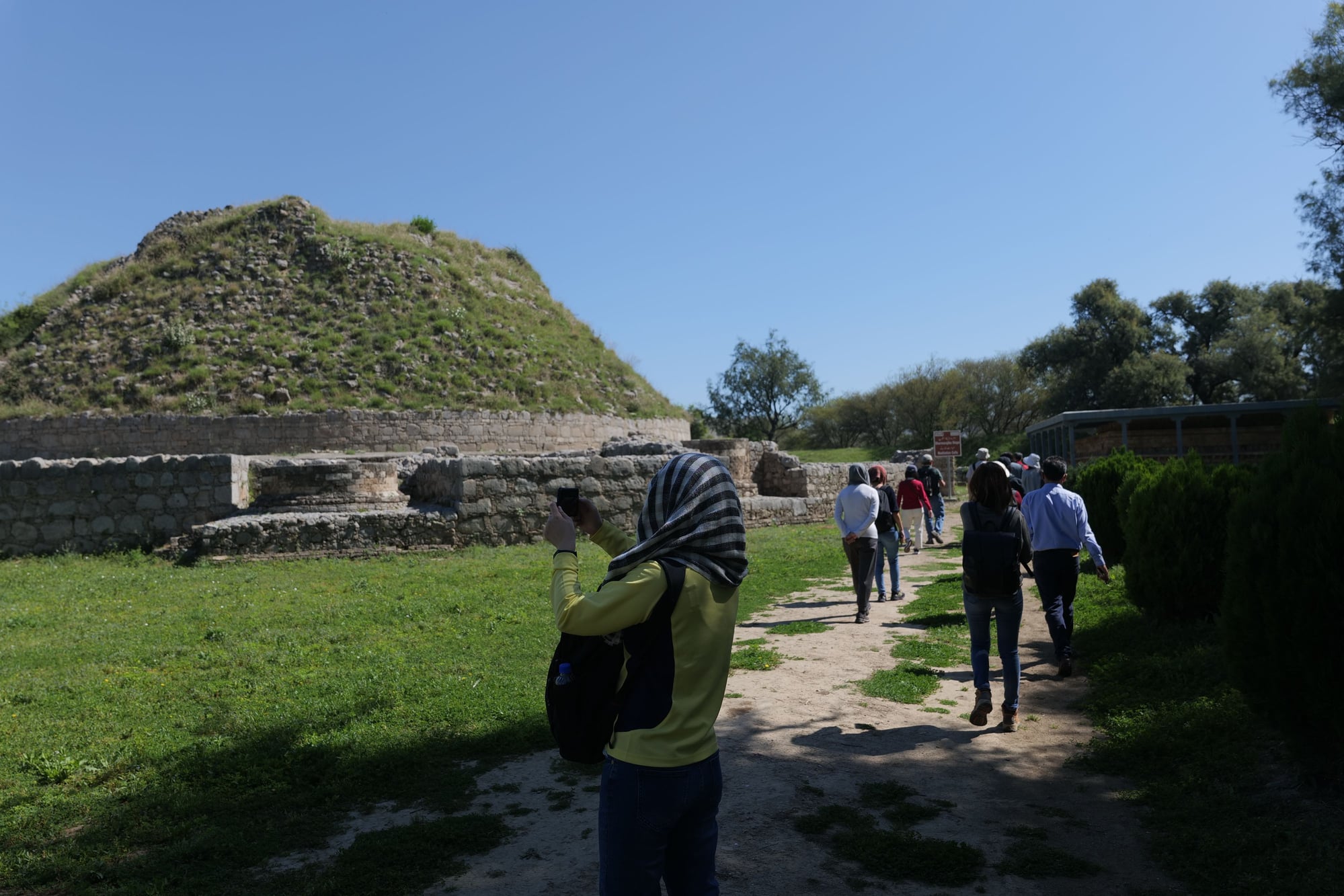
Dharmarajika Taxila
Next, we visited Sirkap, the second fortified city of Taxila that was founded by a Greek king named Demetrius in the 2nd century BCE. We walked along the main avenue and saw the remains of private houses, stupas, and temples that were laid out on the Hellenistic grid system. We noticed the strong Western classical influence on the local architecture, as well as the traces of various cultural and religious groups that lived in the city, such as Greeks, Scythians, Parthians, and Kushans.
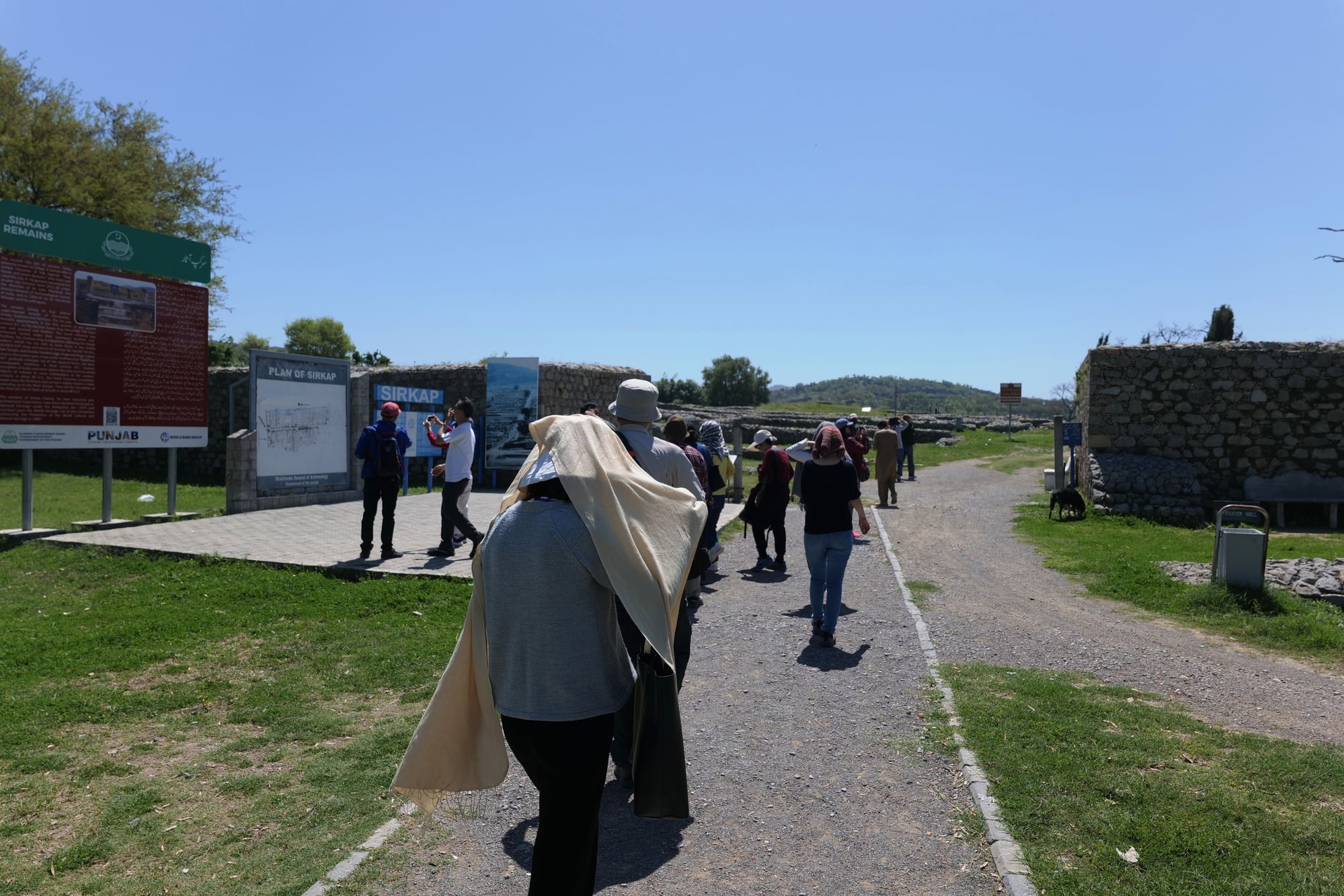
Sirkap
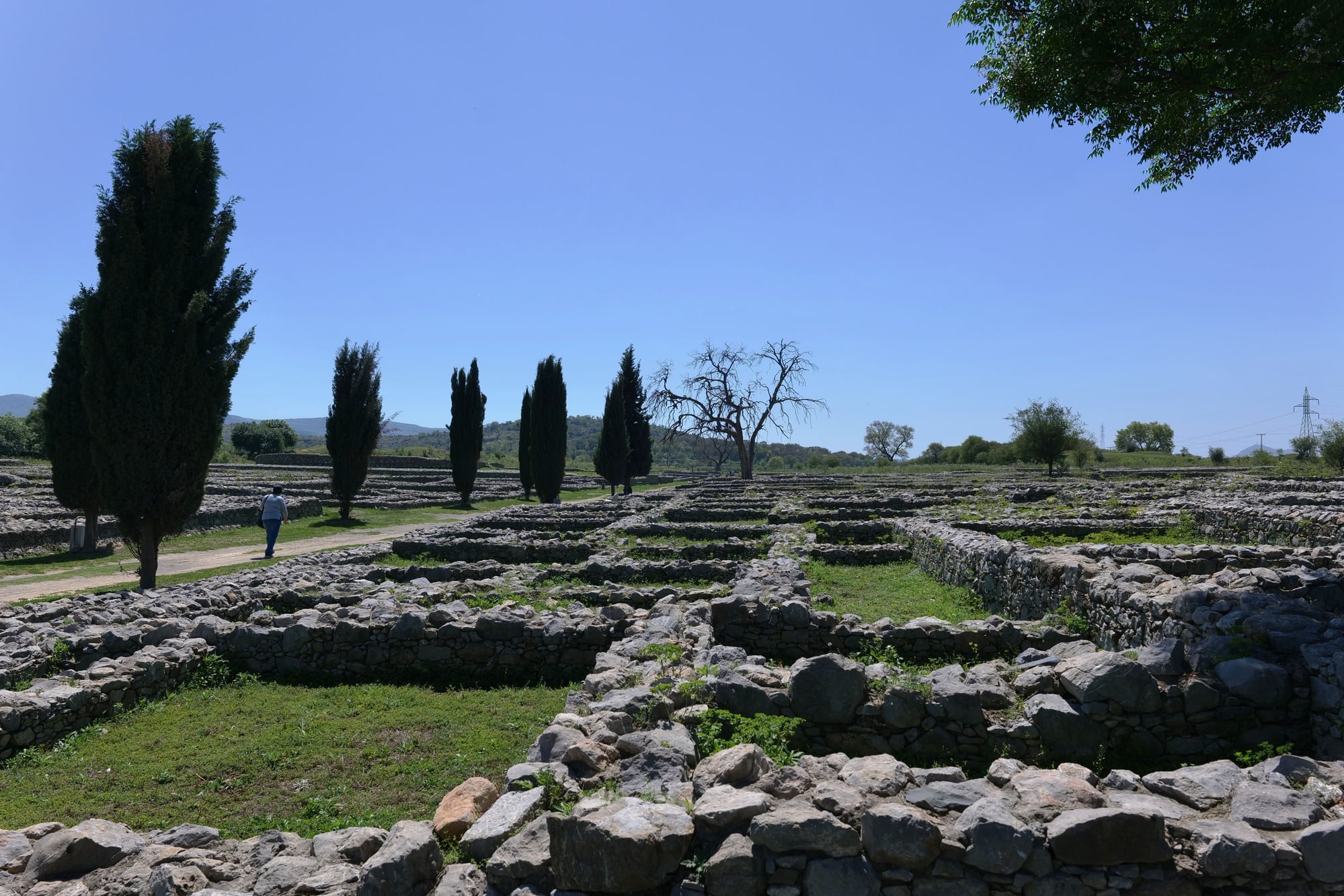
Sirkap Ancient city
After Sirkap, we drove to Jaulian Monastery, a hilltop complex that dated back to the 2nd century CE. It was home to one of the world’s oldest universities until it was destroyed by the White Huns in the 5th century CE. We explored the main sacred area with a central stupa and 27 smaller votive stupas, and the monastery with two courtyards and numerous chapels. We saw some remarkable statues of the Buddha and other deities, as well as some inscriptions and paintings on the walls.
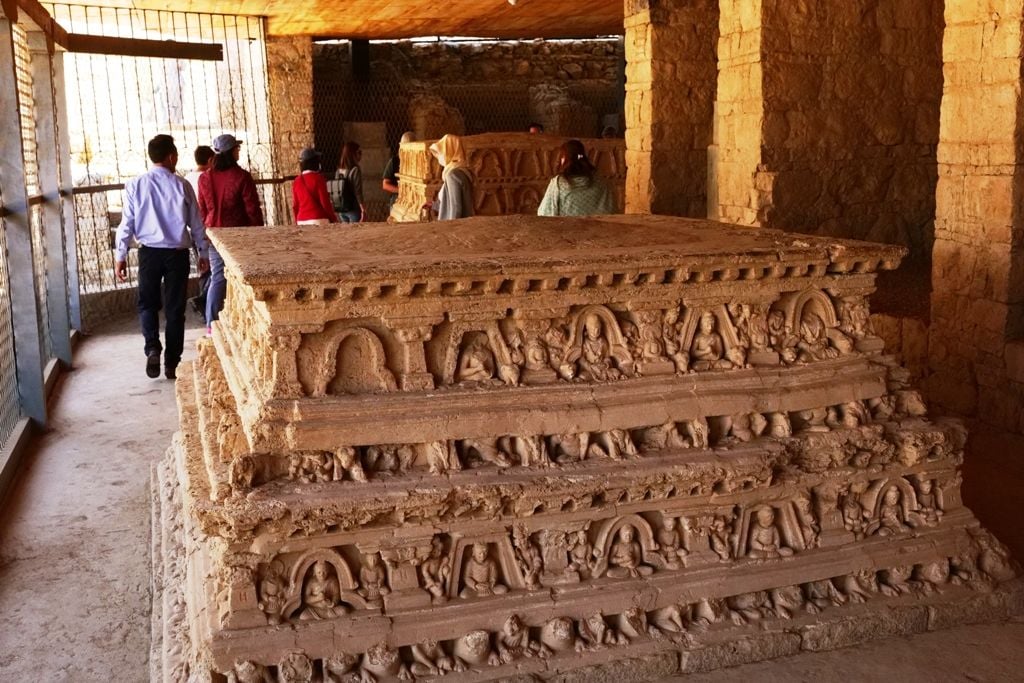
Julian Taxila

Julian Monastry
We then headed to Khanpur Dam, a scenic reservoir that supplied drinking and irrigation water to Islamabad and Rawalpindi. We enjoyed the view of the blue-green water and the surrounding mountains, and indulged in some water sports and activities, such as boating, jet skiing, and cliff diving. We also had tea/local snacks by the lake and relaxed in the fresh air.
After Khanpur Dam, we drove to Mardan, the second-largest city of Khyber Pakhtunkhwa and the headquarters of the district. We had a local Pashtun traditional lunch at a restaurant and tasted some of the regional specialties, such as chapli kebab, lamb karahi, and naan bread. We also learned about the Pashtun culture and traditions, such as the code of honour (Pashtunwali), the hospitality (melmastia), and the poetry (landay).
From Mardan, we continued our journey to Swat Valley, a beautiful valley in the north of Khyber Pakhtunkhwa that was known as the Switzerland of Pakistan. En route, we visited Shingerdara Stupa, a dome-shaped ancient Buddhist shrine that was located near the village of Shingerdara. It was one of the largest and best-preserved stupas in the region, and dated back to the 2nd or 3rd century CE. We marveled at the size and shape of the stupa, and imagined how it must have looked like in its glory days.
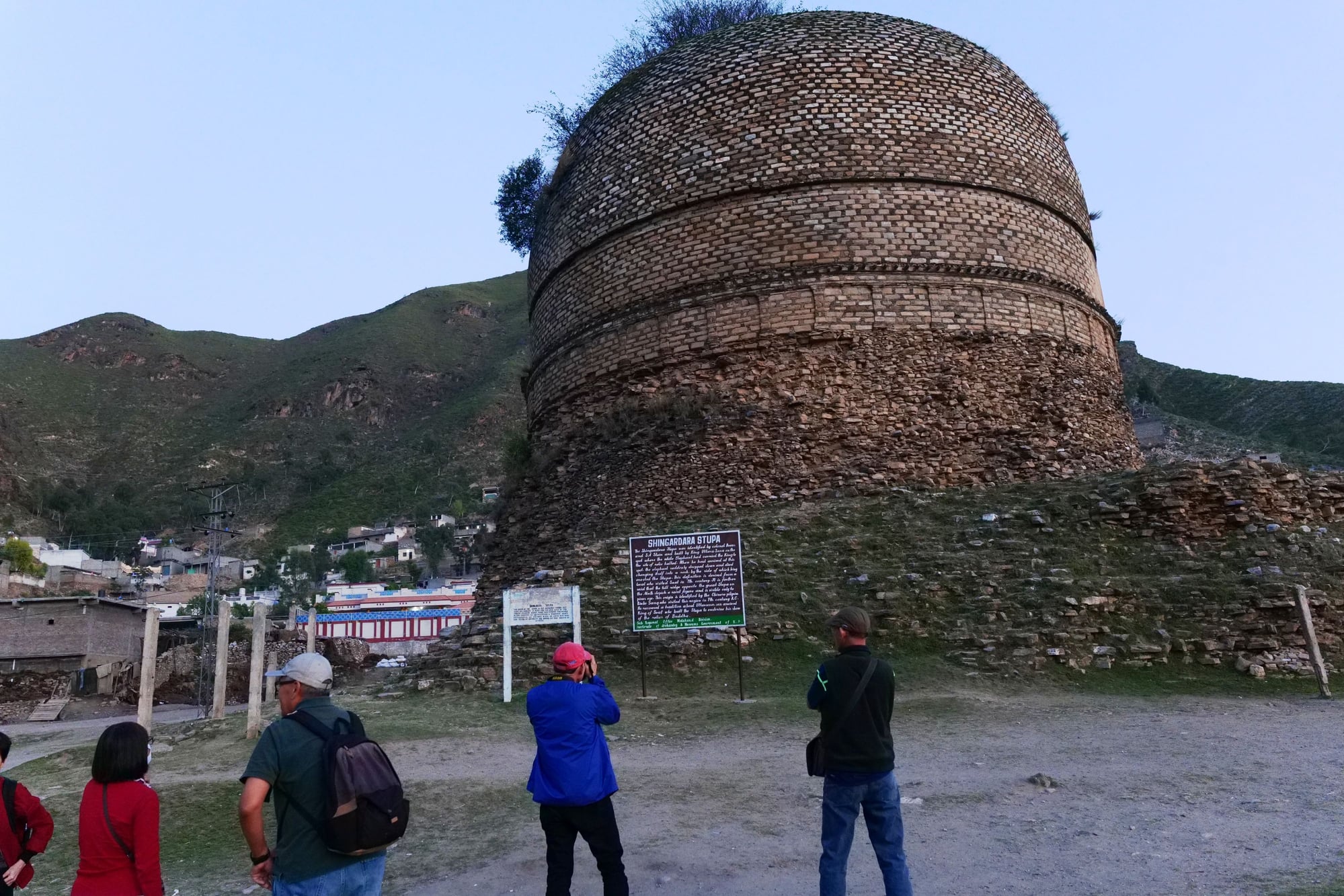
Shingerdara Stupa
We then drove to Malam Jabba, a hill station and ski resort in the Swat Valley. We checked in to Pearl Continental Hotel, a luxurious hotel that offered panoramic views of the valley and the mountains. We enjoyed the facilities and services of the hotel, such as the indoor pool, the spa, and the restaurant. We also prepared for the next day’s adventure of skiing and snowboarding on the slopes of Malam Jabba. We learned that Malam Jabba was the only ski resort in Pakistan, and that it was built with the help of the Austrian government in 1988. It was destroyed by the Taliban in 2008, but was rebuilt and reopened in 2016.

Pearl Continental Hotel Malam Jabba

Malam Jabba
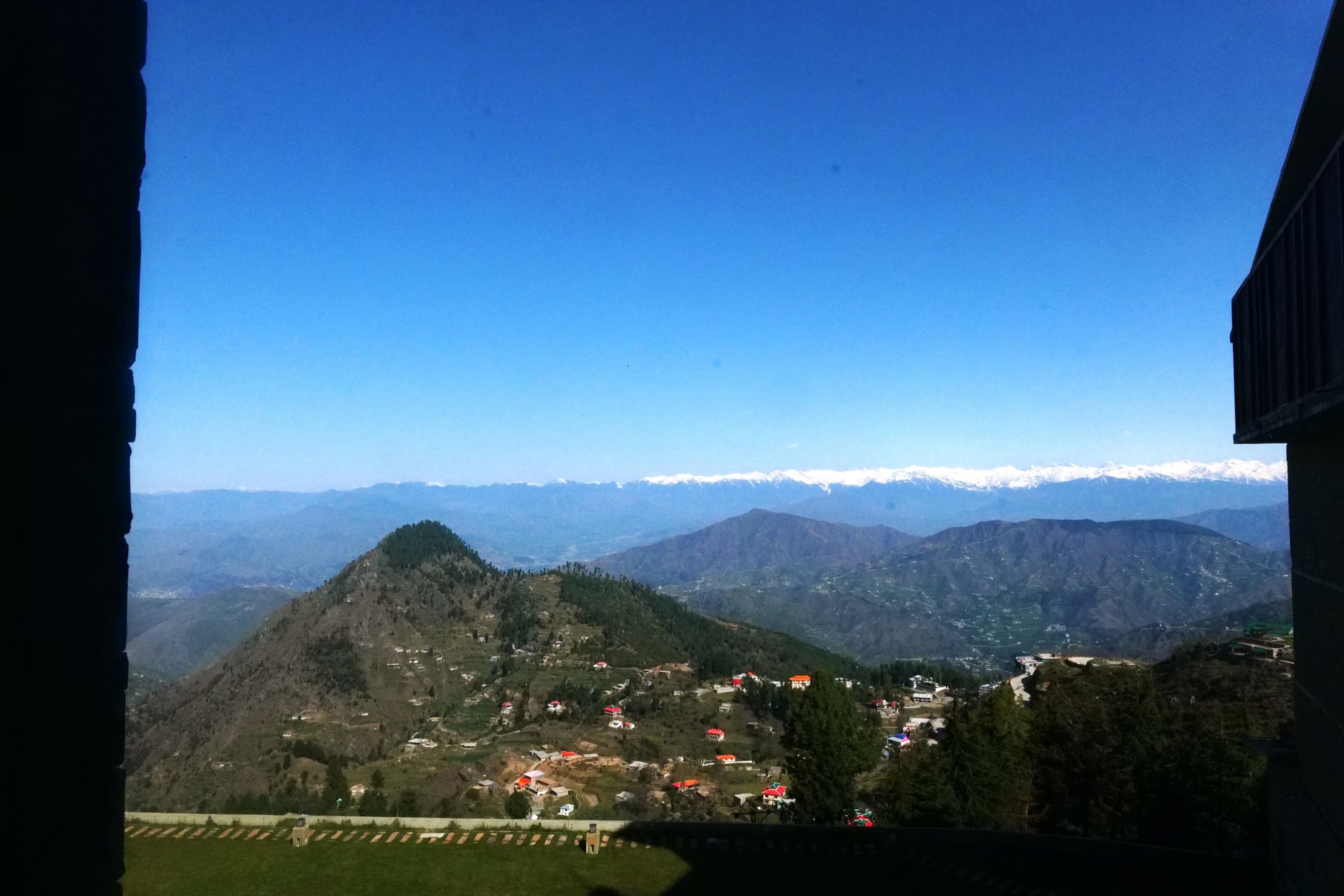
view from PC hotel room
We had a wonderful day of exploring the historical, cultural, and natural wonders of Pakistan. We learned a lot about the ancient Gandhara civilization, the Buddhist heritage, the Pashtun culture, and the Swat Valley. We also had fun and excitement in the water and on the snow. We looked forward to the next day’s activities and discoveries.
The warm and hospitable nature of the people of Islamabad, who welcomed us with smiles and greetings. We also noticed the diversity of the city, which reflected its role as the capital and the political hub of Pakistan. We saw people from different ethnic, religious, and linguistic backgrounds, as well as foreign diplomats and workers. We also experienced the modern and cosmopolitan culture of Islamabad, which offered a variety of entertainment, shopping, and dining options.
The fascinating and complex history of Taxila, which spanned over a thousand years and several dynasties and empires. We learned how Taxila was a melting pot of cultures and religions, and how it influenced and was influenced by the surrounding regions. We also learned how Taxila was a centre of learning and innovation, and how it produced some of the finest examples of art and architecture in the ancient world. We also learned how Taxila was a victim of its own success, and how it was eventually destroyed by the invasions and wars that plagued the region.
The spiritual and serene atmosphere of the Buddhist sites in Taxila, such as the stupas and the monasteries. We learned how Buddhism spread from India to Gandhara and beyond, and how it adapted and evolved in different contexts. We also learned how Buddhism was a major force in shaping the culture and society of Gandhara, and how it left a lasting legacy in the region. We also learned how Buddhism faced challenges and decline in the face of political and religious changes, and how it survived and revived in some areas.
The adventurous and thrilling experience of the water sports and activities at Khanpur Dam. We learned how Khanpur Dam was built in the 1980s to provide water and electricity to the nearby cities, and how it became a popular tourist destination for locals and foreigners alike. We also learned how Khanpur Dam offered a range of water sports and activities, such as boating, jet skiing, and cliff diving, and how it catered to different levels of skills and preferences. We also learned how Khanpur Dam was a scenic and relaxing spot, where we could enjoy the views of the lake and the mountains, and have a tea/snacks by the shore.
The delicious and diverse cuisine of the Pashtun people, who are the dominant ethnic group in Khyber Pakhtunkhwa and the Swat Valley. We learned how Pashtun cuisine was influenced by the geography and climate of the region, and how it used local ingredients and spices. We also learned how Pashtun cuisine was characterized by its meaty and spicy dishes, such as chapli kebab, lamb karahi, and naan bread. We also learned how Pashtun cuisine was a reflection of the Pashtun culture and traditions, such as the code of honour (Pashtunwali), the hospitality (melmastia), and the poetry (landay).
The natural and scenic beauty of the Swat Valley, which is one of the most attractive and visited places in Pakistan. We learned how Swat Valley was blessed with lush green valleys, snow-capped mountains, crystal clear rivers, and glacial lakes, and how it offered a variety of activities and attractions for tourists, such as hiking, camping, fishing, and sightseeing. We also learned how Swat Valley was rich in history and culture, and how it was once the home of a powerful and prosperous Buddhist kingdom, and later a centre of Islamic learning and art. We also learned how Swat Valley faced challenges and conflicts in the recent past, and how it recovered and restored its peace and stability.
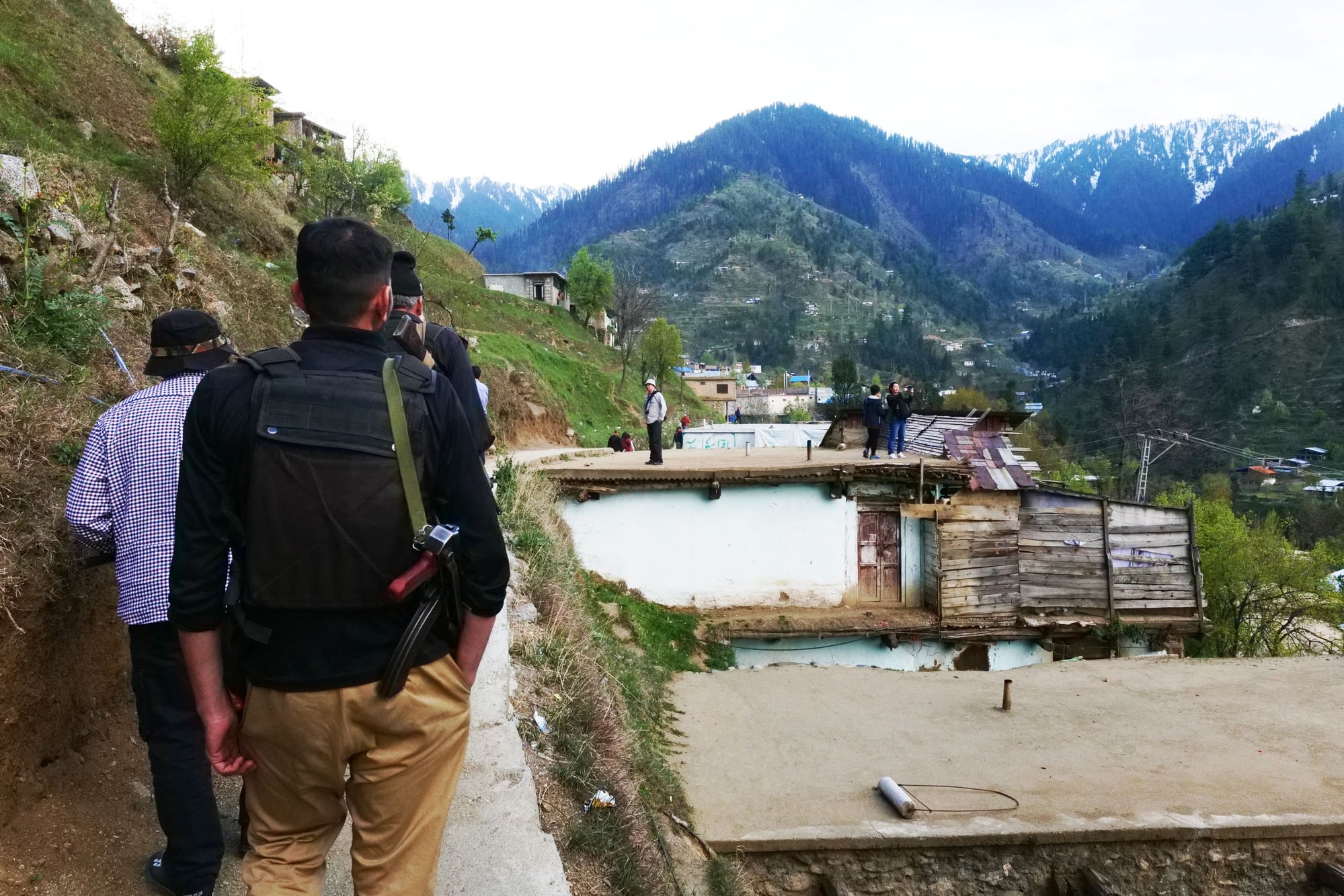
Pushtun village visit
The next morning, we set off to explore Taxila, a place of such historical and archaeological significance that it made us feel like Indiana Jones. We visited the Taxila Museum, which housed a dazzling array of sculptures, coins, pottery, jewelry, and other artefacts from the ancient Gandhara civilization. We were amazed by the skill and artistry of the craftsmen who created these objects, and the diversity and richness of the culture that they represented. We learned that Taxila was founded in the 7th or 6th century BCE, and was a major centre of Buddhism, education, trade, and art. It was also a strategic location that witnessed the invasions of Alexander the Great, the Mauryan emperor Ashoka, the Indo-Greeks, the Indo-Scythians, the Kushans, and the Huns.

Taxila Museum

Taxila museum

taxila museum
We then proceeded to Dharmarajika Stupa, a circular structure that looked like a giant cake with a cherry on top. It was built by the great emperor Ashoka in the 3rd century BCE to enshrine the relics of the Buddha. We admired the intricate carvings and decorations on the stupa and the surrounding chapels, and felt a sense of awe and reverence for the ancient Buddhist culture.

Dharmarajika Taxila
Next, we visited Sirkap, the second fortified city of Taxila that was founded by a Greek king named Demetrius in the 2nd century BCE. We walked along the main avenue and saw the remains of private houses, stupas, and temples that were laid out on the Hellenistic grid system. We noticed the strong Western classical influence on the local architecture, as well as the traces of various cultural and religious groups that lived in the city, such as Greeks, Scythians, Parthians, and Kushans.

Sirkap

Sirkap Ancient city
After Sirkap, we drove to Jaulian Monastery, a hilltop complex that dated back to the 2nd century CE. It was home to one of the world’s oldest universities until it was destroyed by the White Huns in the 5th century CE. We explored the main sacred area with a central stupa and 27 smaller votive stupas, and the monastery with two courtyards and numerous chapels. We saw some remarkable statues of the Buddha and other deities, as well as some inscriptions and paintings on the walls.

Julian Taxila

Julian Monastry
We then headed to Khanpur Dam, a scenic reservoir that supplied drinking and irrigation water to Islamabad and Rawalpindi. We enjoyed the view of the blue-green water and the surrounding mountains, and indulged in some water sports and activities, such as boating, jet skiing, and cliff diving. We also had tea/local snacks by the lake and relaxed in the fresh air.
After Khanpur Dam, we drove to Mardan, the second-largest city of Khyber Pakhtunkhwa and the headquarters of the district. We had a local Pashtun traditional lunch at a restaurant and tasted some of the regional specialties, such as chapli kebab, lamb karahi, and naan bread. We also learned about the Pashtun culture and traditions, such as the code of honour (Pashtunwali), the hospitality (melmastia), and the poetry (landay).
From Mardan, we continued our journey to Swat Valley, a beautiful valley in the north of Khyber Pakhtunkhwa that was known as the Switzerland of Pakistan. En route, we visited Shingerdara Stupa, a dome-shaped ancient Buddhist shrine that was located near the village of Shingerdara. It was one of the largest and best-preserved stupas in the region, and dated back to the 2nd or 3rd century CE. We marveled at the size and shape of the stupa, and imagined how it must have looked like in its glory days.

Shingerdara Stupa
We then drove to Malam Jabba, a hill station and ski resort in the Swat Valley. We checked in to Pearl Continental Hotel, a luxurious hotel that offered panoramic views of the valley and the mountains. We enjoyed the facilities and services of the hotel, such as the indoor pool, the spa, and the restaurant. We also prepared for the next day’s adventure of skiing and snowboarding on the slopes of Malam Jabba. We learned that Malam Jabba was the only ski resort in Pakistan, and that it was built with the help of the Austrian government in 1988. It was destroyed by the Taliban in 2008, but was rebuilt and reopened in 2016.

Pearl Continental Hotel Malam Jabba

Malam Jabba

view from PC hotel room
We had a wonderful day of exploring the historical, cultural, and natural wonders of Pakistan. We learned a lot about the ancient Gandhara civilization, the Buddhist heritage, the Pashtun culture, and the Swat Valley. We also had fun and excitement in the water and on the snow. We looked forward to the next day’s activities and discoveries.
The warm and hospitable nature of the people of Islamabad, who welcomed us with smiles and greetings. We also noticed the diversity of the city, which reflected its role as the capital and the political hub of Pakistan. We saw people from different ethnic, religious, and linguistic backgrounds, as well as foreign diplomats and workers. We also experienced the modern and cosmopolitan culture of Islamabad, which offered a variety of entertainment, shopping, and dining options.
The fascinating and complex history of Taxila, which spanned over a thousand years and several dynasties and empires. We learned how Taxila was a melting pot of cultures and religions, and how it influenced and was influenced by the surrounding regions. We also learned how Taxila was a centre of learning and innovation, and how it produced some of the finest examples of art and architecture in the ancient world. We also learned how Taxila was a victim of its own success, and how it was eventually destroyed by the invasions and wars that plagued the region.
The spiritual and serene atmosphere of the Buddhist sites in Taxila, such as the stupas and the monasteries. We learned how Buddhism spread from India to Gandhara and beyond, and how it adapted and evolved in different contexts. We also learned how Buddhism was a major force in shaping the culture and society of Gandhara, and how it left a lasting legacy in the region. We also learned how Buddhism faced challenges and decline in the face of political and religious changes, and how it survived and revived in some areas.
The adventurous and thrilling experience of the water sports and activities at Khanpur Dam. We learned how Khanpur Dam was built in the 1980s to provide water and electricity to the nearby cities, and how it became a popular tourist destination for locals and foreigners alike. We also learned how Khanpur Dam offered a range of water sports and activities, such as boating, jet skiing, and cliff diving, and how it catered to different levels of skills and preferences. We also learned how Khanpur Dam was a scenic and relaxing spot, where we could enjoy the views of the lake and the mountains, and have a tea/snacks by the shore.
The delicious and diverse cuisine of the Pashtun people, who are the dominant ethnic group in Khyber Pakhtunkhwa and the Swat Valley. We learned how Pashtun cuisine was influenced by the geography and climate of the region, and how it used local ingredients and spices. We also learned how Pashtun cuisine was characterized by its meaty and spicy dishes, such as chapli kebab, lamb karahi, and naan bread. We also learned how Pashtun cuisine was a reflection of the Pashtun culture and traditions, such as the code of honour (Pashtunwali), the hospitality (melmastia), and the poetry (landay).
The natural and scenic beauty of the Swat Valley, which is one of the most attractive and visited places in Pakistan. We learned how Swat Valley was blessed with lush green valleys, snow-capped mountains, crystal clear rivers, and glacial lakes, and how it offered a variety of activities and attractions for tourists, such as hiking, camping, fishing, and sightseeing. We also learned how Swat Valley was rich in history and culture, and how it was once the home of a powerful and prosperous Buddhist kingdom, and later a centre of Islamic learning and art. We also learned how Swat Valley faced challenges and conflicts in the recent past, and how it recovered and restored its peace and stability.

Pushtun village visit
Last edited by sinkara; Dec 1st, 2023 at 11:46 PM. Reason: to upload pictures
#4
Join Date: Jan 2014
Posts: 11
Likes: 0
Received 0 Likes
on
0 Posts
Sooner or later, they are going to demolish this as well. I am happy to see that you have visited this and shared the story and pictures so that we can experience it without visiting this country.
Did you ever feel unsafe during the entire journey?
Did you ever feel unsafe during the entire journey?
#5
Original Poster
Join Date: Sep 2014
Posts: 11
Likes: 0
Received 0 Likes
on
0 Posts
You're very welcome! I'm happy to hear that you found the information about the remains of Buddhism in Pakistan valuable. It's such a fascinating aspect of the country's history and culture that often doesn't get as much attention.
#6
Original Poster
Join Date: Sep 2014
Posts: 11
Likes: 0
Received 0 Likes
on
0 Posts
#7
Original Poster
Join Date: Sep 2014
Posts: 11
Likes: 0
Received 0 Likes
on
0 Posts
Regarding safety,
throughout my journey, I never felt unsafe for a moment. The warmth and friendliness of the local people were truly remarkable. Everywhere went, there was a genuine spirit of welcome and hospitality that made the entire experience even more enjoyable. The kindness of the people and their openness added a beautiful dimension to the trip, making it not just a tour of places but a journey filled with positive human connections.I must commend the local tour operator for their meticulous attention to security throughout our journey. Their expertise and awareness of local conditions significantly contributed to the overall sense of safety. They seemed well-informed about security issues and took measures to ensure a safe environment for both locals and visitors. It added an extra layer of reassurance to our travels.
Trending Topics
#8
Original Poster
Join Date: Sep 2014
Posts: 11
Likes: 0
Received 0 Likes
on
0 Posts
We woke up early in the morning at the Pearl Continental Hotel Malam Jabba, a five-star resort overlooking the majestic Hindu Kush Mountains. The hotel is located near the Malam Jabba Ski Resort, which is the only ski resort in Pakistan and offers thrilling slopes and stunning views. We had a delicious breakfast at the hotel’s Marco Polo restaurant, which serves a variety of Pakistani and continental cuisines.
After breakfast, we decided to visit some of the nearby Buddhist sites that date back to the ancient Gandhara civilization, which flourished in this region from the 3rd century BCE to the 6th century CE. Gandhara was a center of Buddhism and Greco-Buddhist art, and many of its sculptures and monuments are preserved in museums and archaeological sites across Pakistan.
We drove down to the valley, passing through scenic villages. Our first stop was the Jahanabad Buddha, a giant rock carving of the Buddha that is located on a hillside near the village of Shakhorai. The carving is about 7 meters (23 feet) high and is considered one of the most important pieces of Buddhist art in South Asia. The carving was damaged by the Taliban in 2007, but was restored by an Italian-led team of experts in 2016. We were amazed by the skill and devotion of the ancient artists who created this masterpiece, and by the efforts of the modern restorers who brought it back to life.
We then continued our journey to the town of Madyan, which is famous for its trout farms and handicrafts. We visited one of the trout farms and enjoyed a fresh and tasty trout lunch. We also bought some souvenirs from the local shops, such as shawls, carpets, and wooden carvings.

swat village

water channel
From Madyan, we drove further to the town of Bahrain, which is situated at the confluence of the Swat and Daral rivers. Bahrain is a popular tourist spot for its natural beauty and cultural diversity. We visited the local bazaar, where we saw many old handicraft shops selling unique items made by the local people.
After spending some time in Bahrain, we headed back to the hotel, enjoying the sunset and the cool breeze along the way. We then retired to our comfortable rooms, feeling happy and fulfilled by our day’s adventure.
We learned a lot about the history and culture of Swat Valley, and its rich Buddhist heritage. We were impressed by the diversity and harmony of the people, and the beauty and tranquility of the nature.
We had a hearty breakfast at the hotel, and starated our journey to Chilas via the Shangla Pass, Behsam, and the Karakoram Highway. We boarded our comfortable bus and drove along the Swat River, enjoying the views of the mountains and the villages. After about one and half hour, we reached the Shangla Pass, a mountain pass that connects the upper and lower Swat valleys. The pass is about 2,000 meters (6,600 feet) above sea level and offers panoramic views of the surrounding peaks and valleys. We had a brief photo stop at the pass, and then continued our journey.

bridge
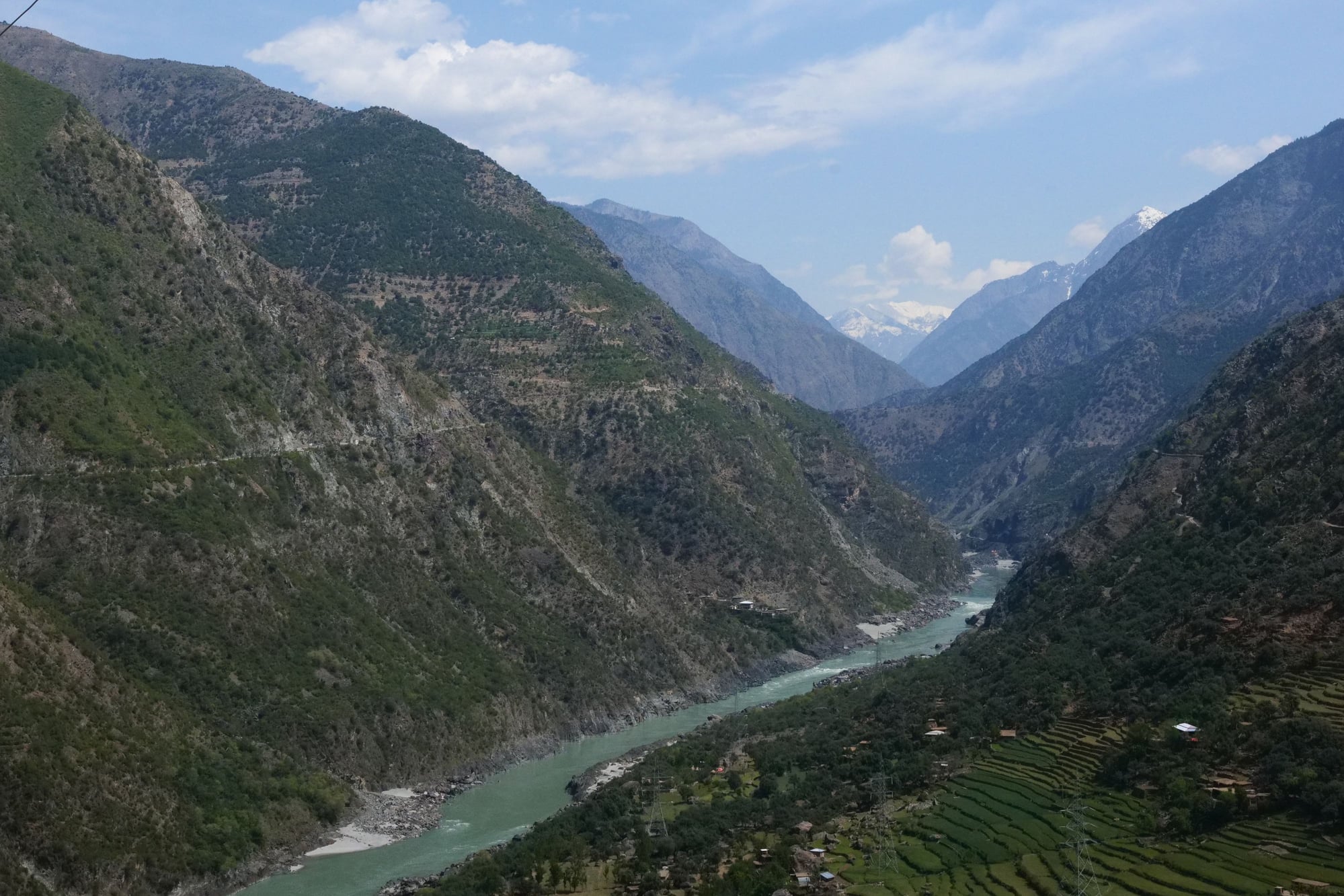
Indus and KKH
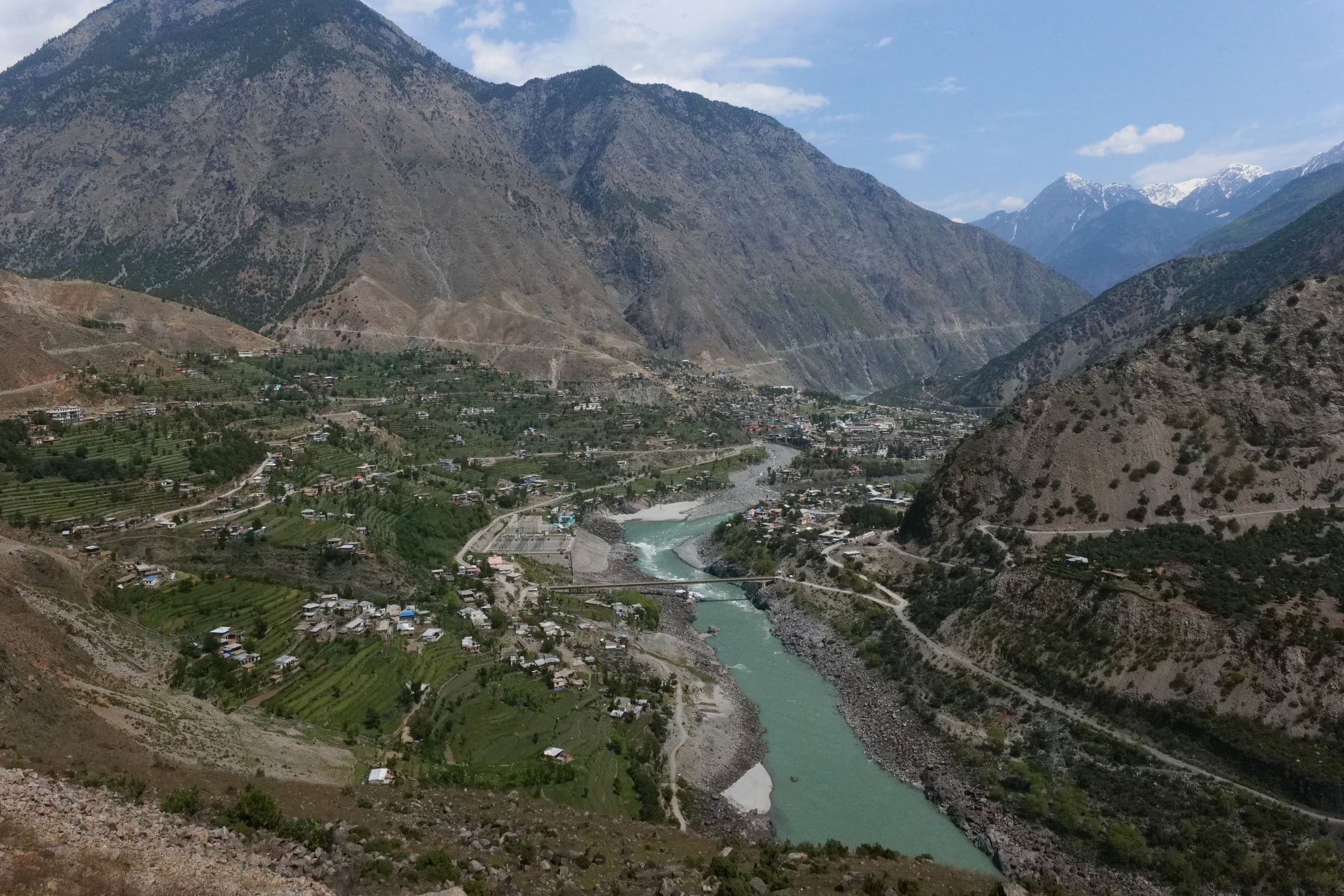
Indus and Kohistan valley
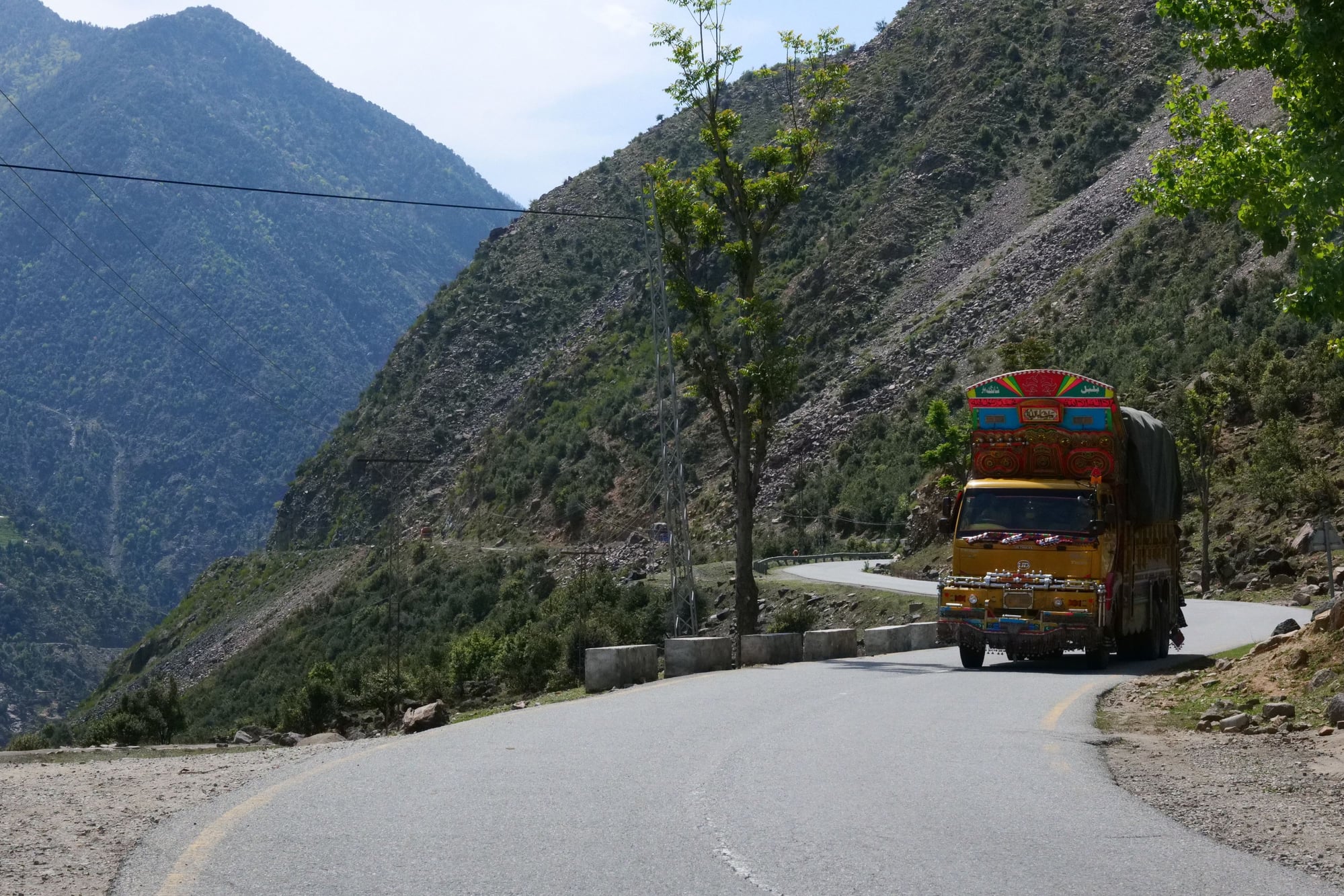
KKH
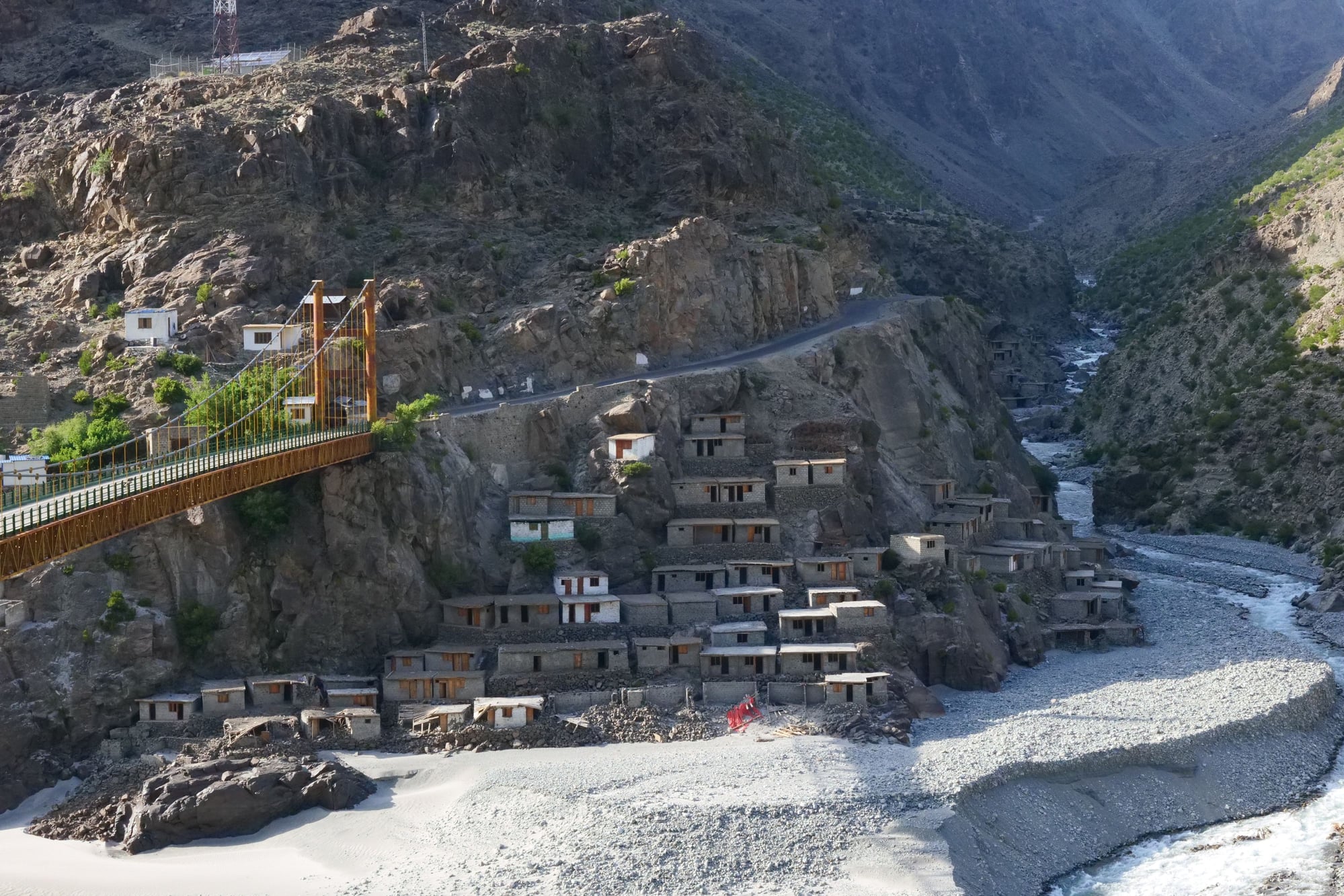
KKH kohistan
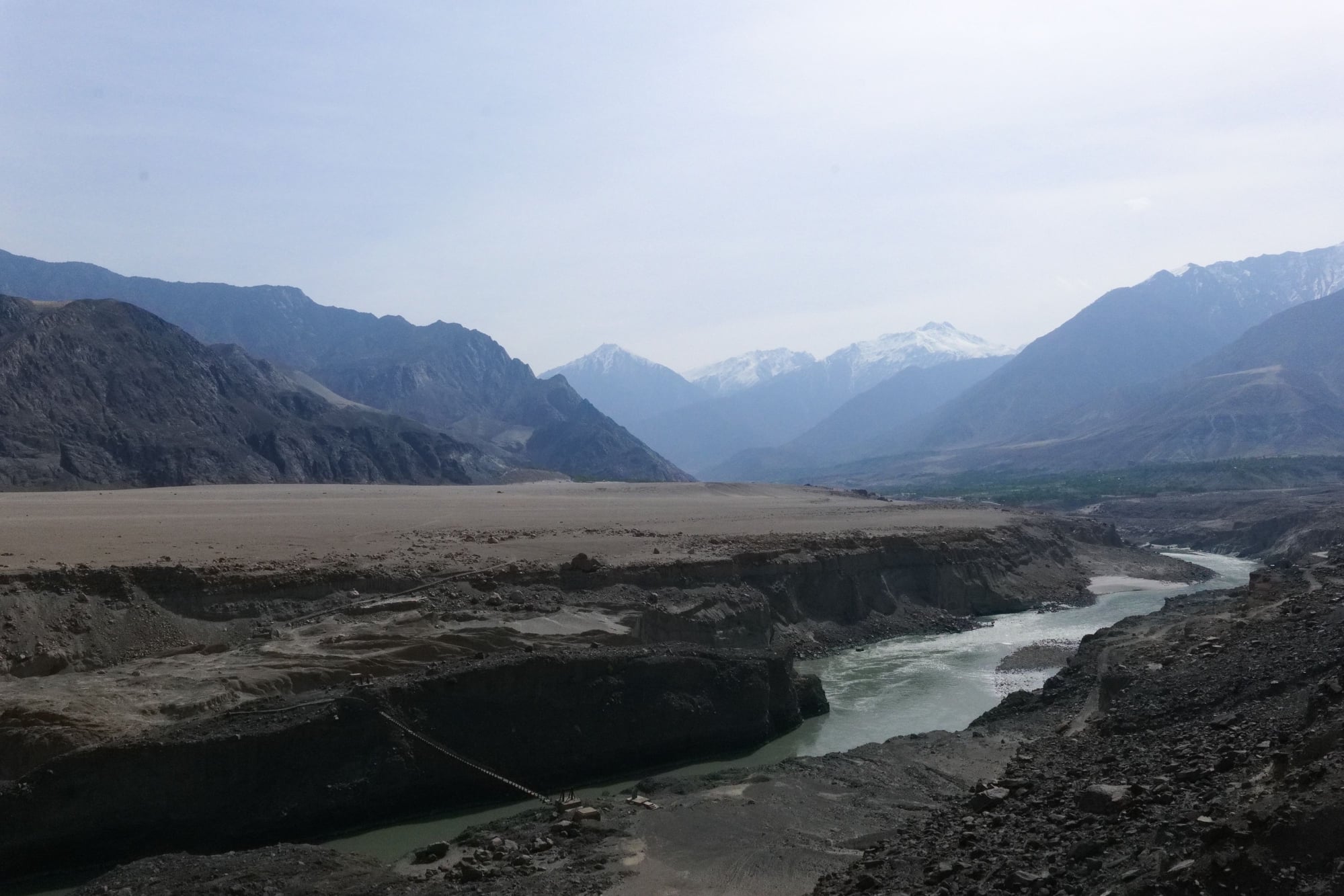
Chilas and indus
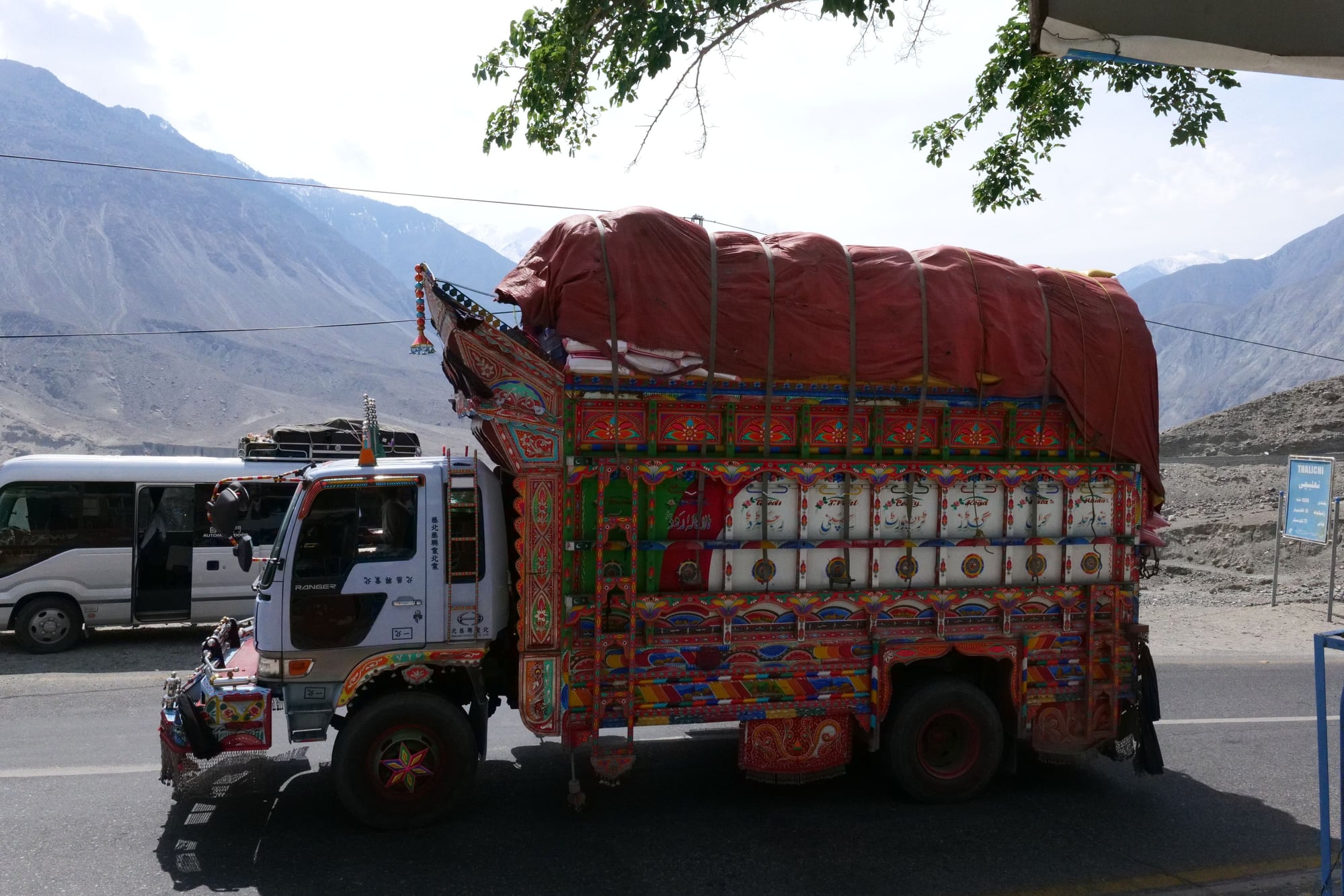
truck on KKH
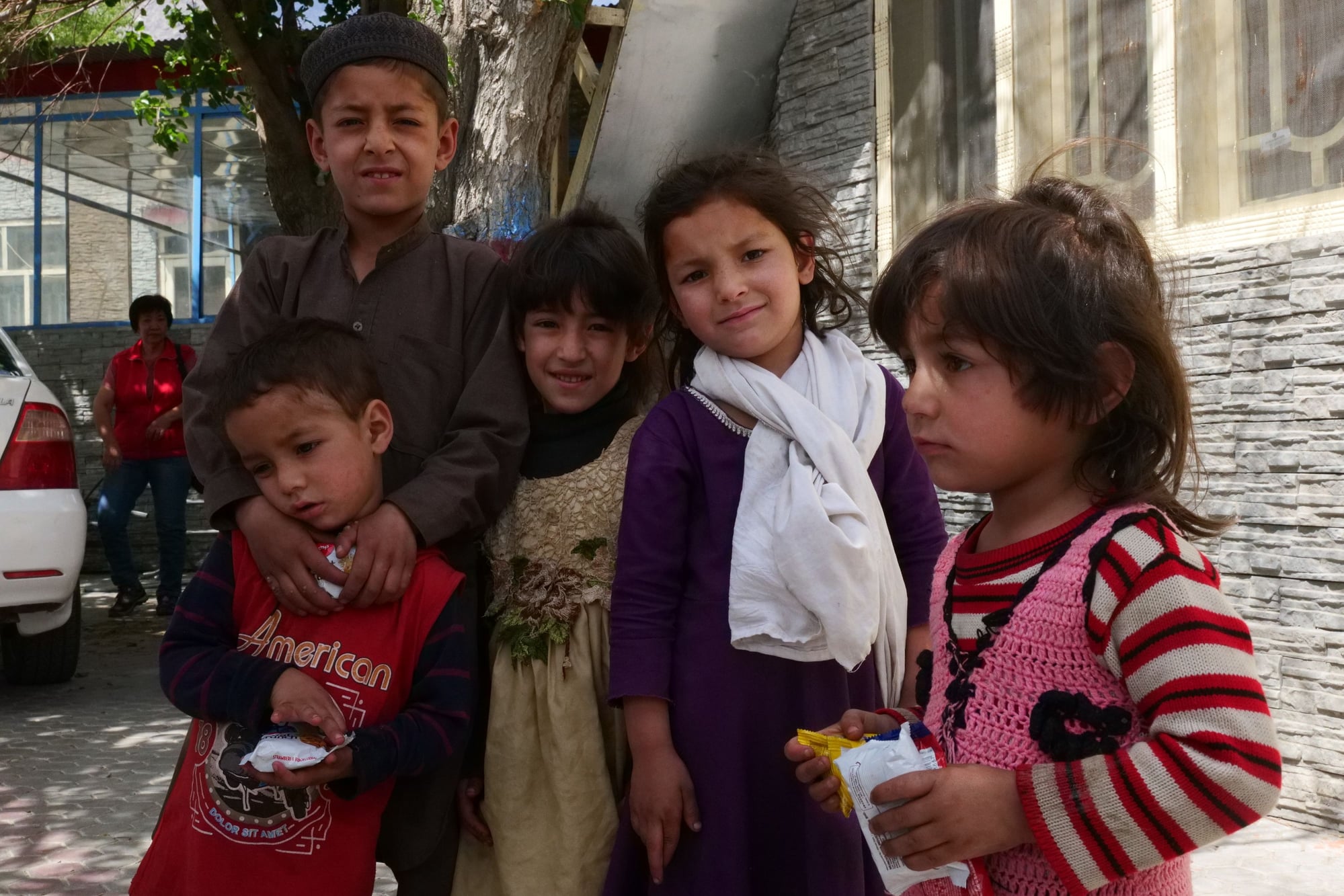
swat kids
Our next stop was a small waterfall near the town of Alpuri, the headquarters of the Shangla District.The waterfall was a refreshing sight, and we took some pictures and enjoyed the cool breeze. We also had a chance to interact with some of the local people, who were very friendly and hospitable. They told us about their culture and traditions, which are influenced by the Pashtun, Kohistani, and Gujjar ethnic groups They also offered us some of their local delicacies, such as makai ki roti (corn bread) and lassi (yogurt drink).
We resumed our drive and reached a small old bridge over the Shangla River, which falls in to Indus river, which is one of the longest and most important rivers in Asia. The river originates in the Tibetan Plateau and flows through India, Pakistan, and China, before emptying into the Arabian Sea The river has been a cradle of civilization, and has witnessed many historical events and cultural exchanges We had another photo stop at the bridge, and admired the mighty river and its surroundings.
We then joined the Karakoram Highway, which is the highest paved international road in the world, running between Pakistan and China. The highway is also known as the Eighth Wonder of the World, because of the engineering marvel and the scenic beauty. The highway follows the course of the Indus River, and passes through the Kohistan Valley, which is a mountainous region with diverse flora and fauna The people of Kohistan are mostly tribal and conservative, and have their own language and customs
We drove along the highway for about four hours, and reached our destination of Chilas, a small town in the Gilgit-Baltistan region. Chilas is located on the bank of the Indus River, and is a gateway to the northern areas of Pakistan, such as Gilgit, Hunza, Skardu, and Nanga Parbat. Chilas is also famous for its ancient rock carvings and inscriptions, dating back to the 1st millennium BCE. We checked into our hotel, and had a delicious dinner. We then retired to our rooms, feeling tired but happy after a long and adventurous day.
The history of KKH is quite interesting and long. KKH stands for Karakoram Highway, which is the highest paved international road in the world, running between Pakistan and China1 It is also known as the Friendship Highway in China, and the Eighth Wonder of the World, because of the engineering marvel and the scenic beauty.
KKH was built by the governments of Pakistan and China, and it took almost 20 years (1959-78) to complete It was started in 1962 and was opened to the public in 19781 About 810 Pakistanis and about 200 Chinese workers died, mostly due to landslides and falls, while building the highway Over 140 Chinese workers who died during the construction are buried in the Chinese cemetery in Gilgit.
KKH traces one of the many paths of the ancient Silk Road, and connects the Pakistani provinces of Punjab and Khyber Pakhtunkhwa plus Gilgit-Baltistan with China’s Xinjiang Uyghur Autonomous Region It passes through or near the Pamirs, Hindu Kush, Kunlun Mountains, and Karakoram Range, and reaches a maximum elevation of 4,714 meters (15,466 feet) near Khunjerab Pass It also follows the course of the Indus River, and passes through the Kohistan Valley, which is a mountainous region with diverse flora and fauna
KKH is a popular tourist attraction, and has had a notable economic impact on the Uyghur, Tajik, and Kyrgyz peoples who inhabit the mountainous region It is also a part of the Asian Highway AH4, and a gateway to the northern areas of Pakistan, such as Gilgit, Hunza, Skardu, and Nanga Parbat.
We started our day with a delicious breakfast at the Chilas Shangrila hotel a cozy and comfortable place with a stunning view of the Indus river and the surrounding mountains. The hotel staff were very friendly and helpful, and the rooms were spacious and clean. We enjoyed the local cuisine and the fresh fruits and juices.
After breakfast, we boarded our van and headed towards Thalpan rock carving , a site of ancient art and history. Along the way, we admired the scenery of the Karakoram Highway, which is considered one of the most spectacular roads in the world.
We reached Thalpan rock carving, which is located just off the highway, near the town of Chilas. We were amazed by the petroglyphs that were scattered on the rocks, depicting animals, humans, stupas, Buddhas, and inscriptions in various languages. These carvings date back to the 6th century BC, and reflect the cultural and religious diversity of the region. We learned that this area was part of the ancient Silk Road, and that many travelers, merchants, and pilgrims left their marks on these rocks. We took some photos and marveled at the artistic skill and historical significance of these carvings.
We then continued our journey to Thalechi , a small village where we stopped for a tea break and a panoramic view of the Nanga Parbat. We saw the majestic Nanga Parbat , the ninth highest mountain in the world, looming over the horizon. Its snow-covered peak contrasted with the blue sky and the green valleys. We were lucky to have a clear day, and we could see the entire mountain range, of summit. We felt humbled by the beauty and the grandeur of nature. We also learned that Nanga Parbat means “Naked Mountain” in Urdu, and that it is also known as the “Killer Mountain” because of its notorious reputation for being one of the most difficult and dangerous mountains to climb. After the tea break, we resumed our drive and reached the Junction point of the three mightiest mountain ranges in the world: the Himalayas, the Karakoram, and the Hindu Kush. This is a unique place where these three ranges converge, and where the Gilgit river meets the Indus river. We could see the different directions and characteristics of each range, and we felt like we were standing at the crossroads of the world. We also learned that this point is considered a geological wonder, as it marks the collision of the Indian and Eurasian plates, which gave rise to these magnificent mountains.
We then proceeded to Gilgit city, the capital of Gilgit-Baltistan, and the largest city in the region. We had lunch at a local restaurant, where we tasted some of the specialties of the area, such as chapshoro, a meat-filled flatbread, and mamtu, a steamed dumpling. We also enjoyed the fresh trout fish from the river, and the apricot juice and jam, which are famous in Gilgit-Baltistan.
After lunch, we visited the Kargah Buddha, a 15-feet tall and 5-feet wide statue of Buddha, carved on a mountain at an altitude of around 150 feet from the ground. The sculpture dates back to the 7th century AD, and is a testament to the Buddhist heritage of the region. We learned that Gilgit was once a major center for Buddhism, and that many Chinese monks came to Kashmir through this route, to learn and to preach Buddhism. We also heard some of the local legends and myths about the Buddha, such as the story of the ogress Yashani, who was pinned to the rock by a saint or a shaman, to save the people from her tyranny.
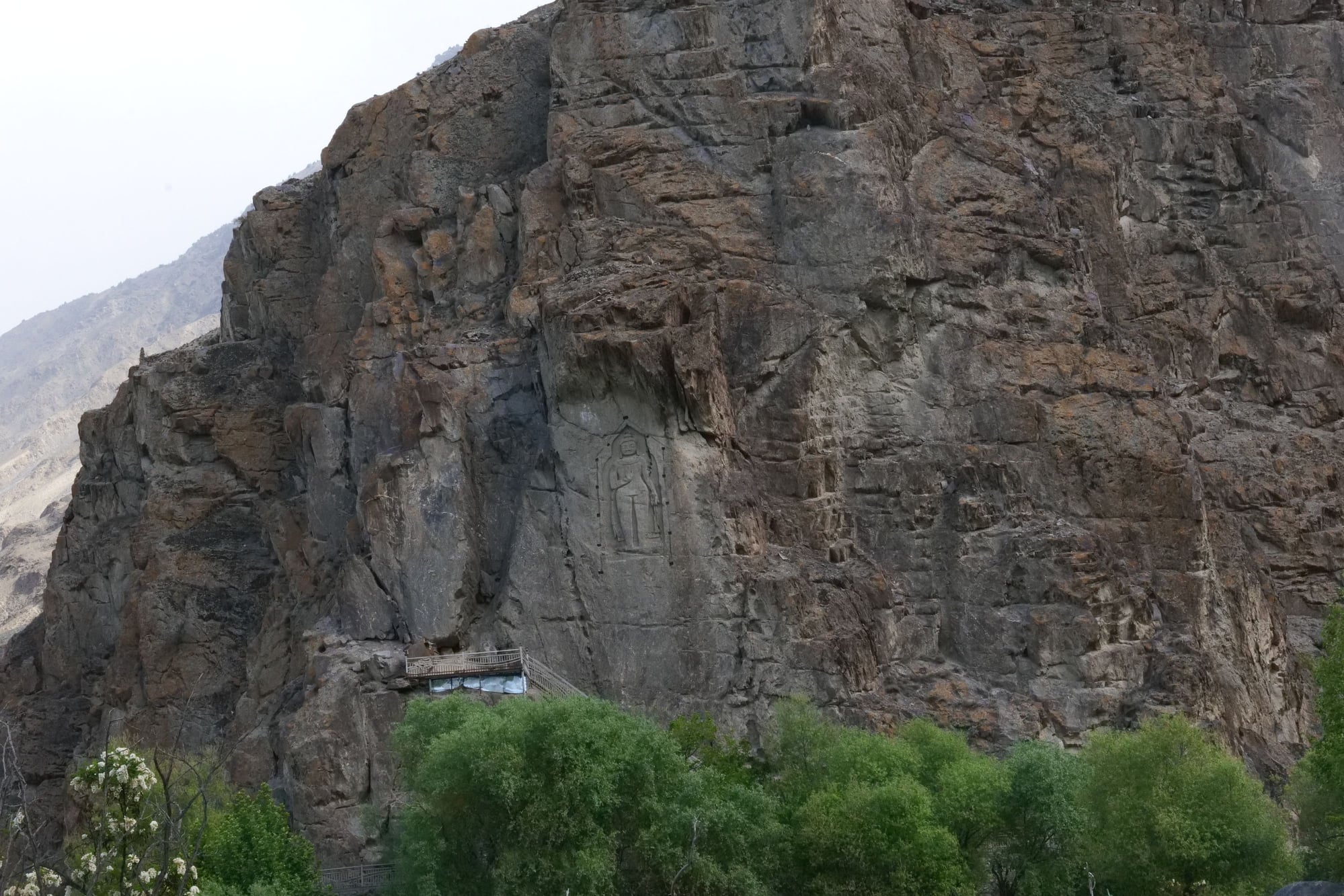
Kargah Buddha
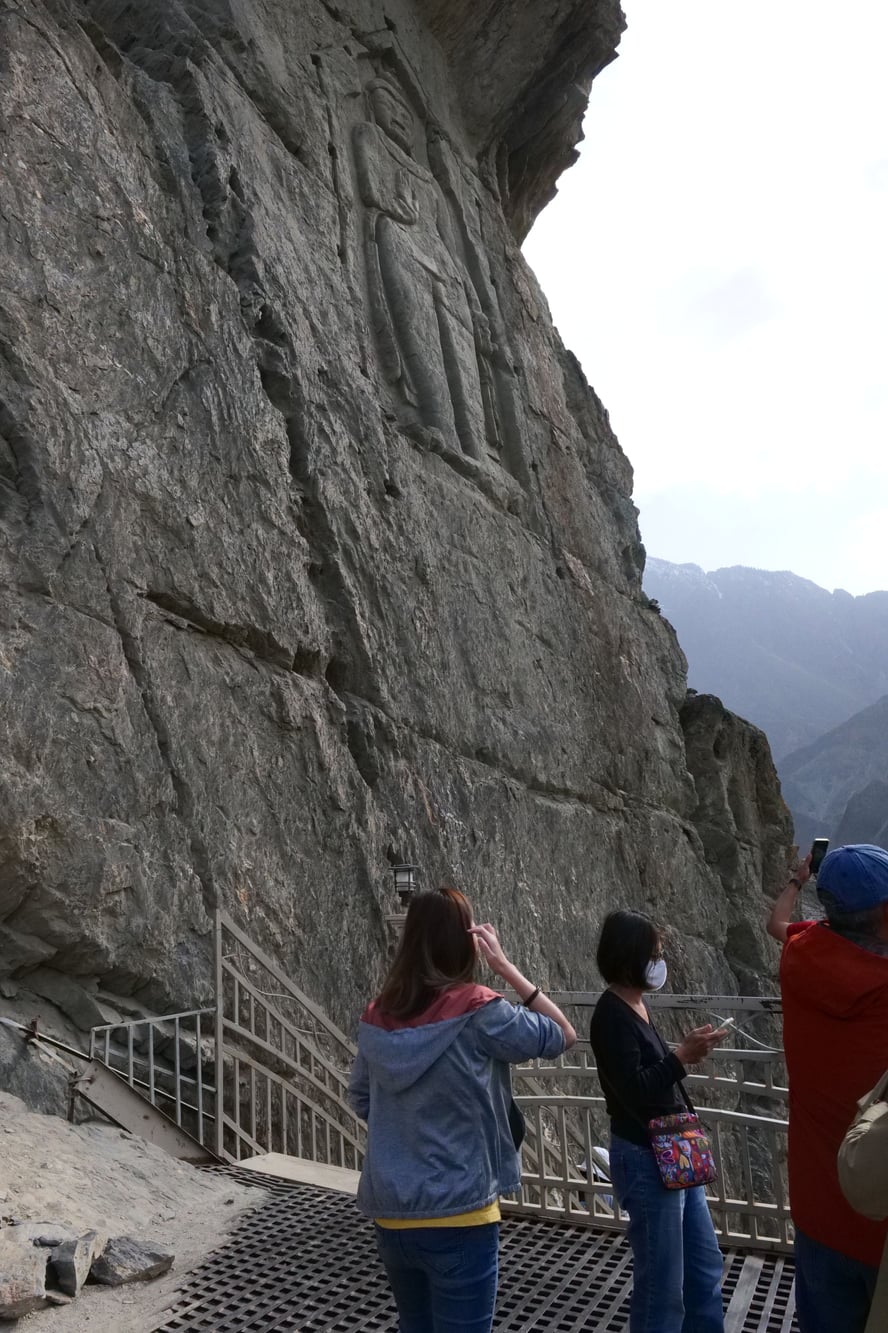
Kargah
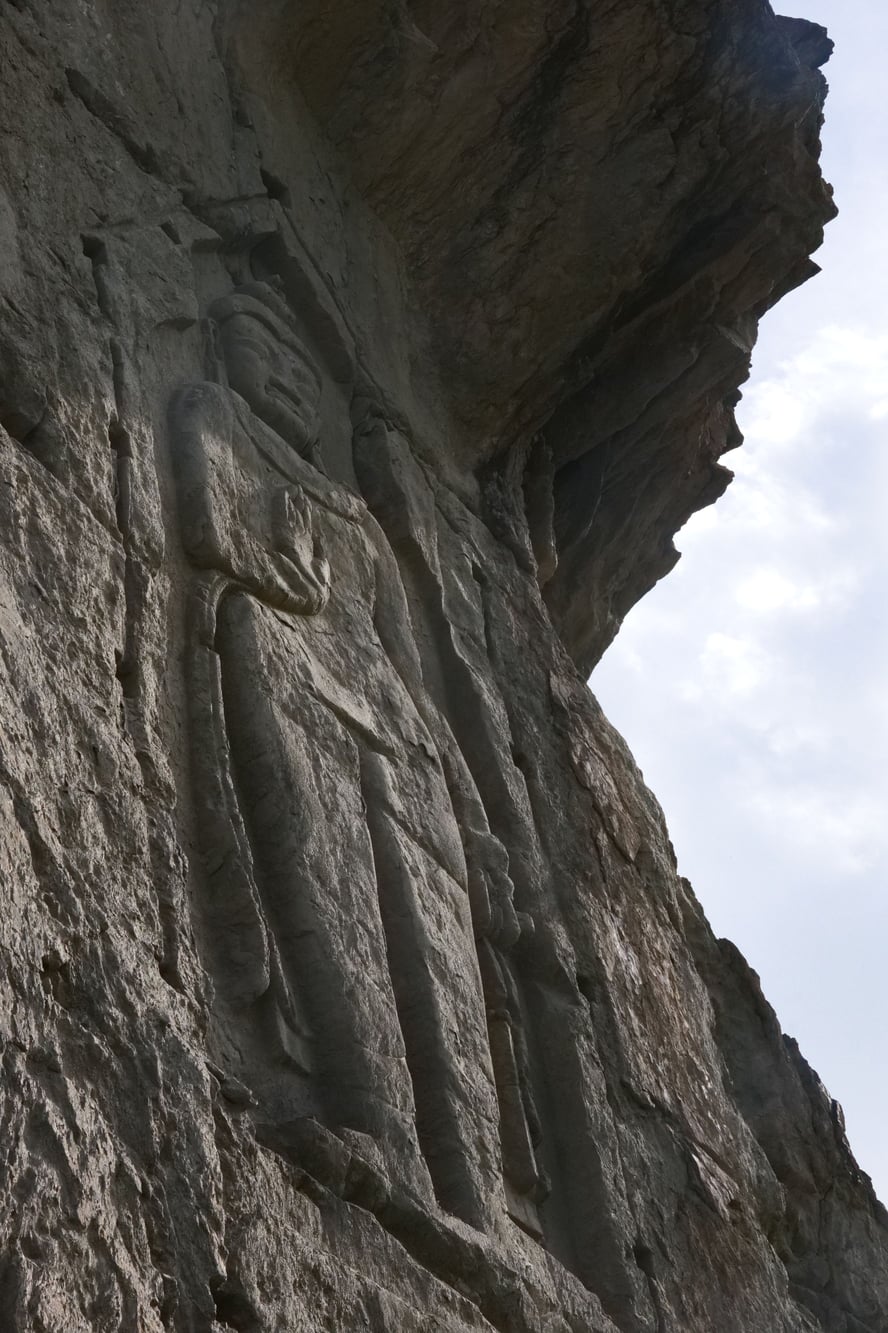
Kargah Gilgit
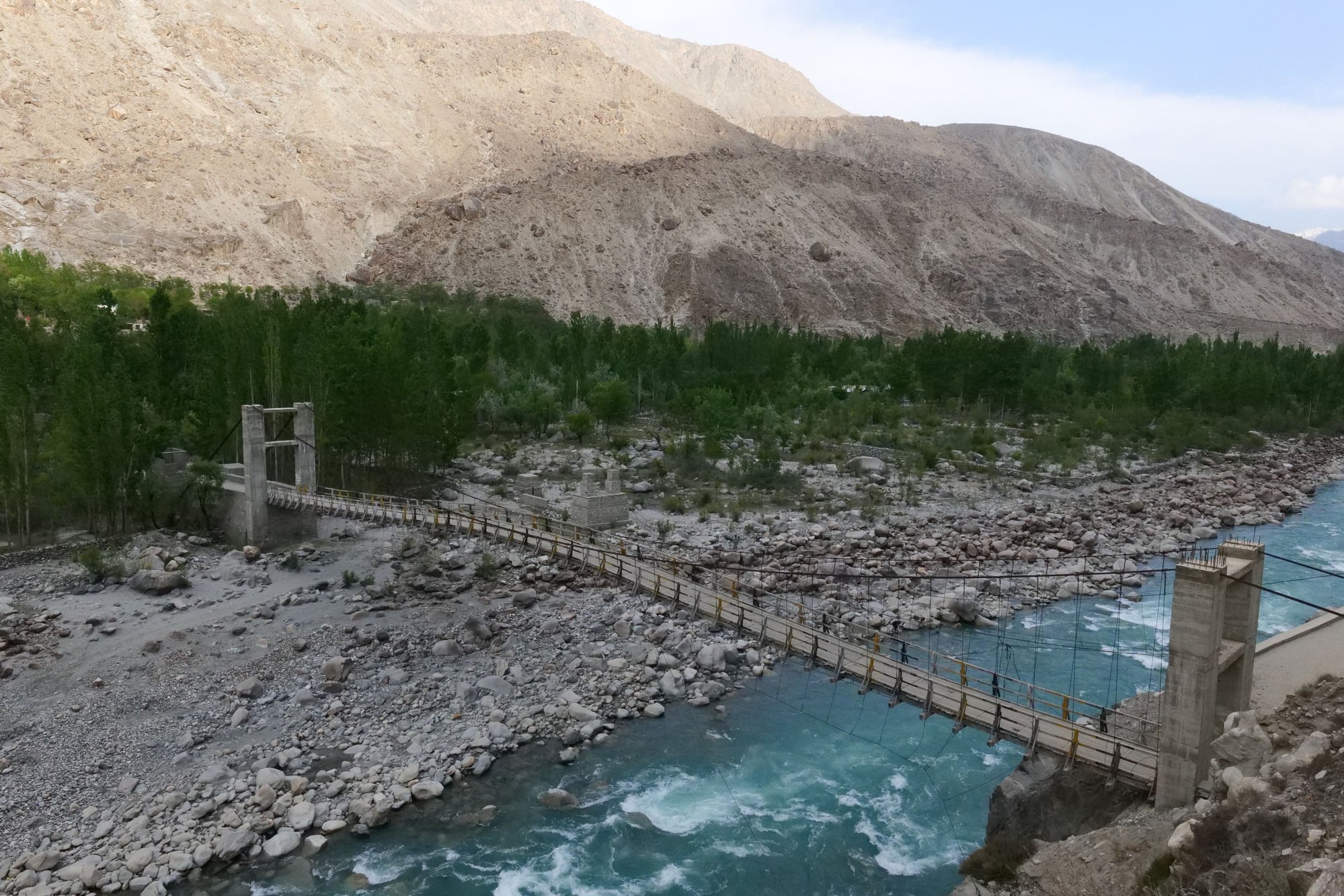
Gilgit river
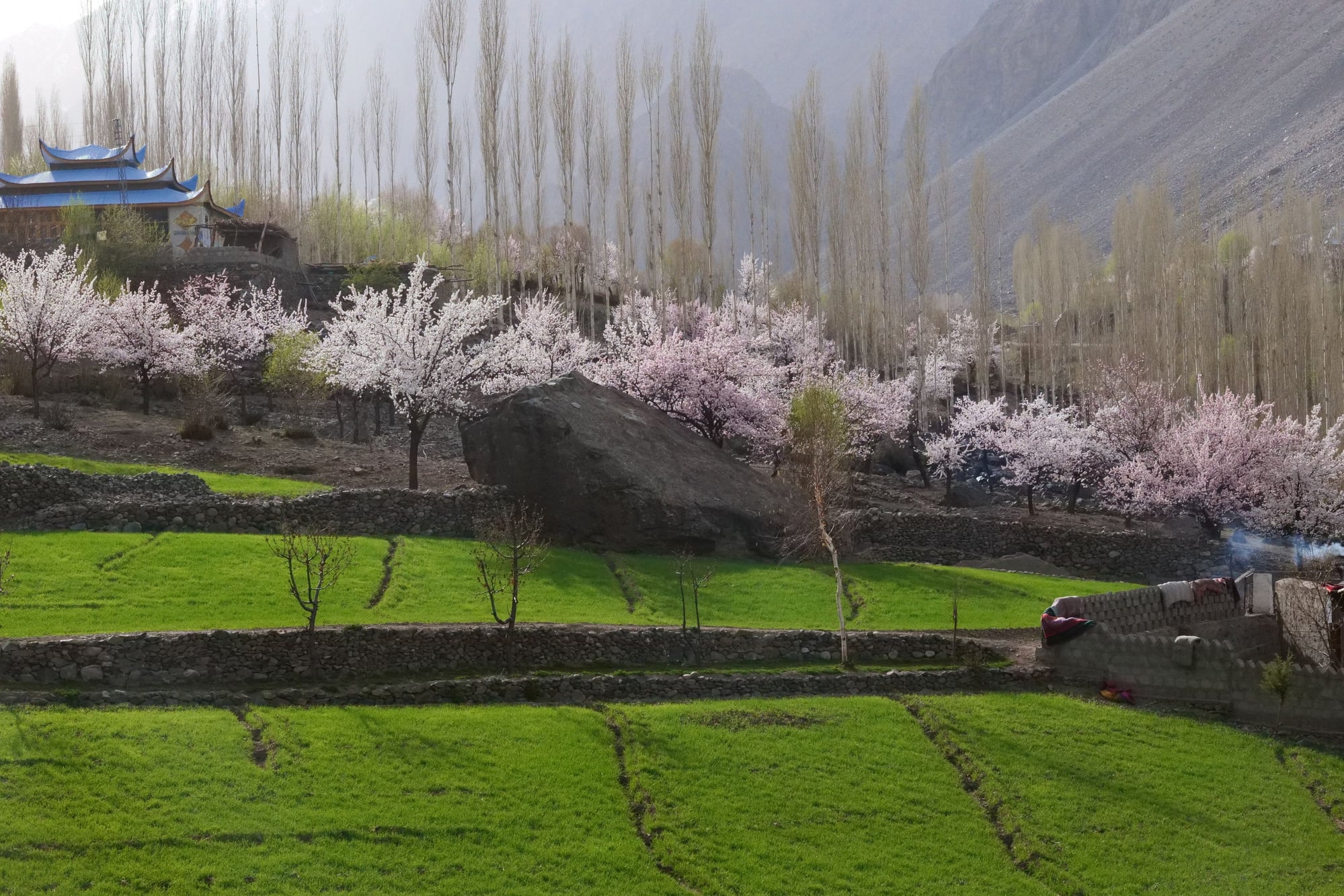
spring bloom
We then went to the Gilgit river , a tributary of the Indus river, and one of the main sources of water and livelihood for the people of Gilgit-Baltistan. The river originates from the Shandur lake, and flows through various districts of Gilgit-Baltistan, before joining the Indus river near the town of Juglot. The river is also a popular spot for fishing, rafting, and boating. We enjoyed the sight and the sound of the river, and felt refreshed by the cool breeze.
We then left Gilgit city and headed towards Nagar valley, one of the most beautiful and scenic valleys in Gilgit-Baltistan. The valley is home to many high mountain peaks, such as Rakaposhi, Diran, Golden Peak, and Rush Peak. The valley is also rich in culture and history, as it was once a princely state, ruled by the Mirs of Nagar for more than 1200 years. The people of Nagar speak Burushaski and Shina languages, and follow a mix of Sunni and Ismaili sects of Islam. The valley is also known for its handicrafts, such as carpets, shawls, and caps.
We stopped at the Rakaposhi view point , where we had a snack break and a breathtaking view of the Rakaposhi mountain, the 27th highest mountain in the world, standing at 7,788 meters. The name Rakaposhi means “Shining Wall” in the local language, and the mountain lives up to its name, as it reflects the sunlight and changes colors throughout the day. We were mesmerized by the sight of the mountain, and took many photos and videos.
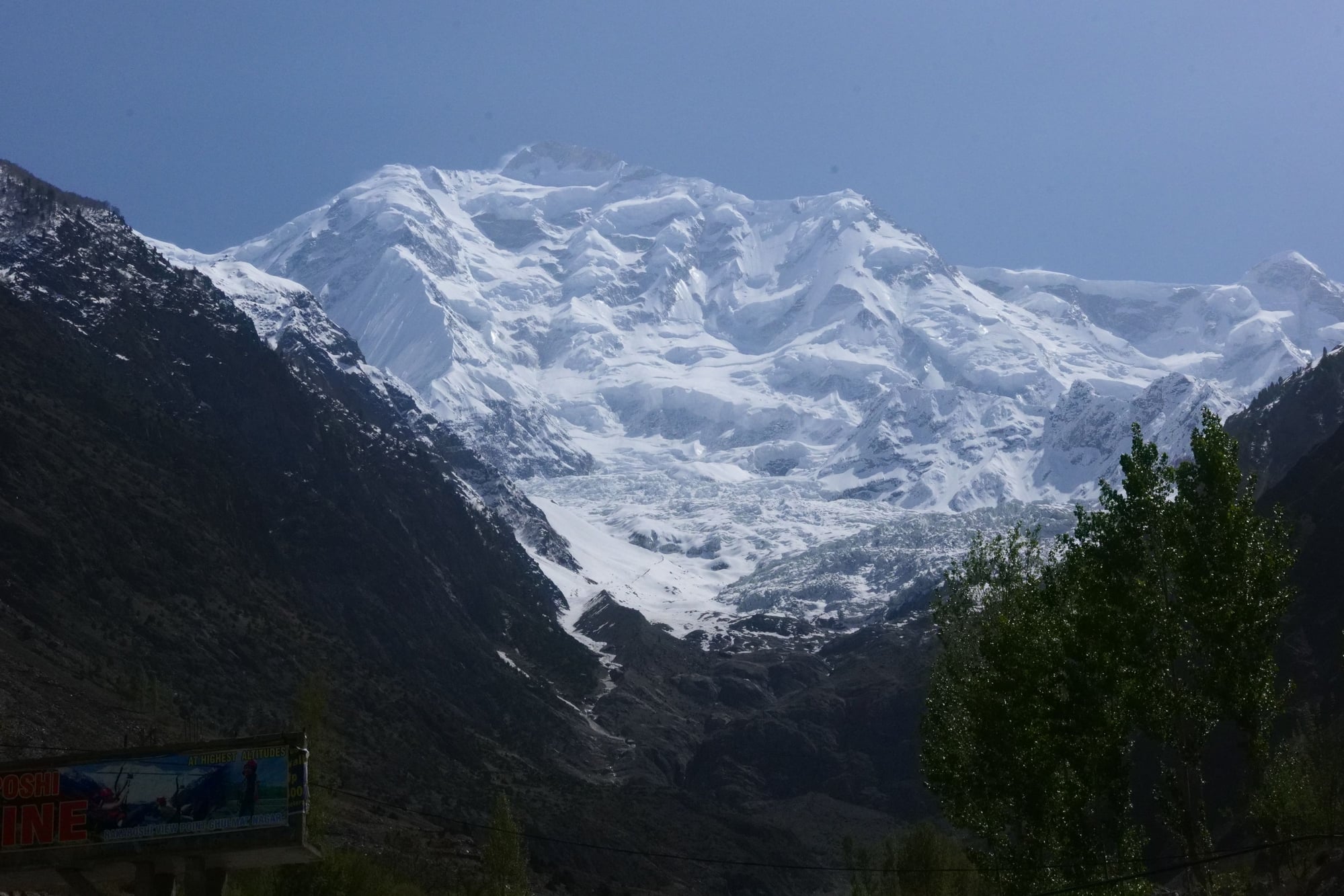
Rakaposhi 7778 m
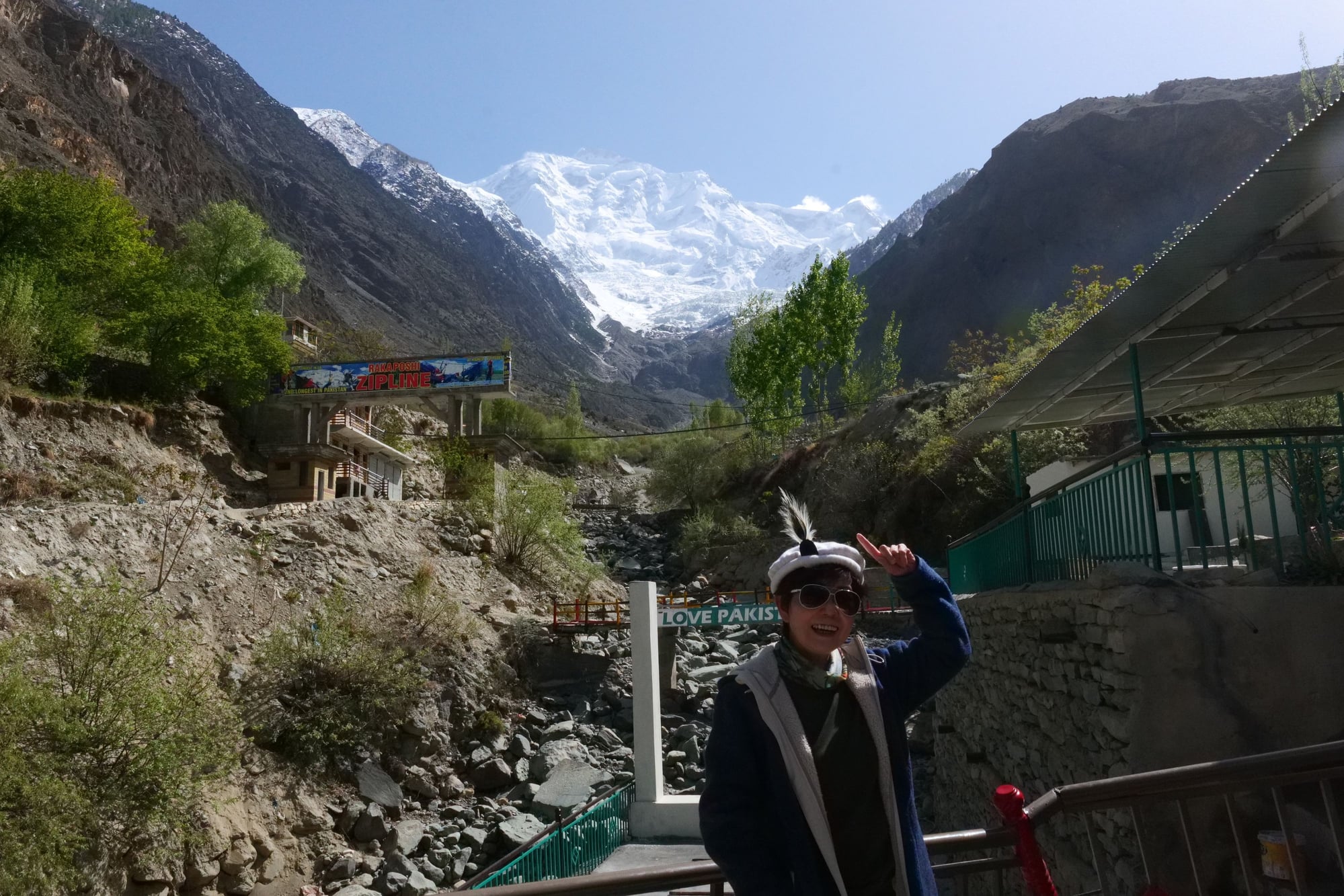
Rakaposhi view point

Nagar valley
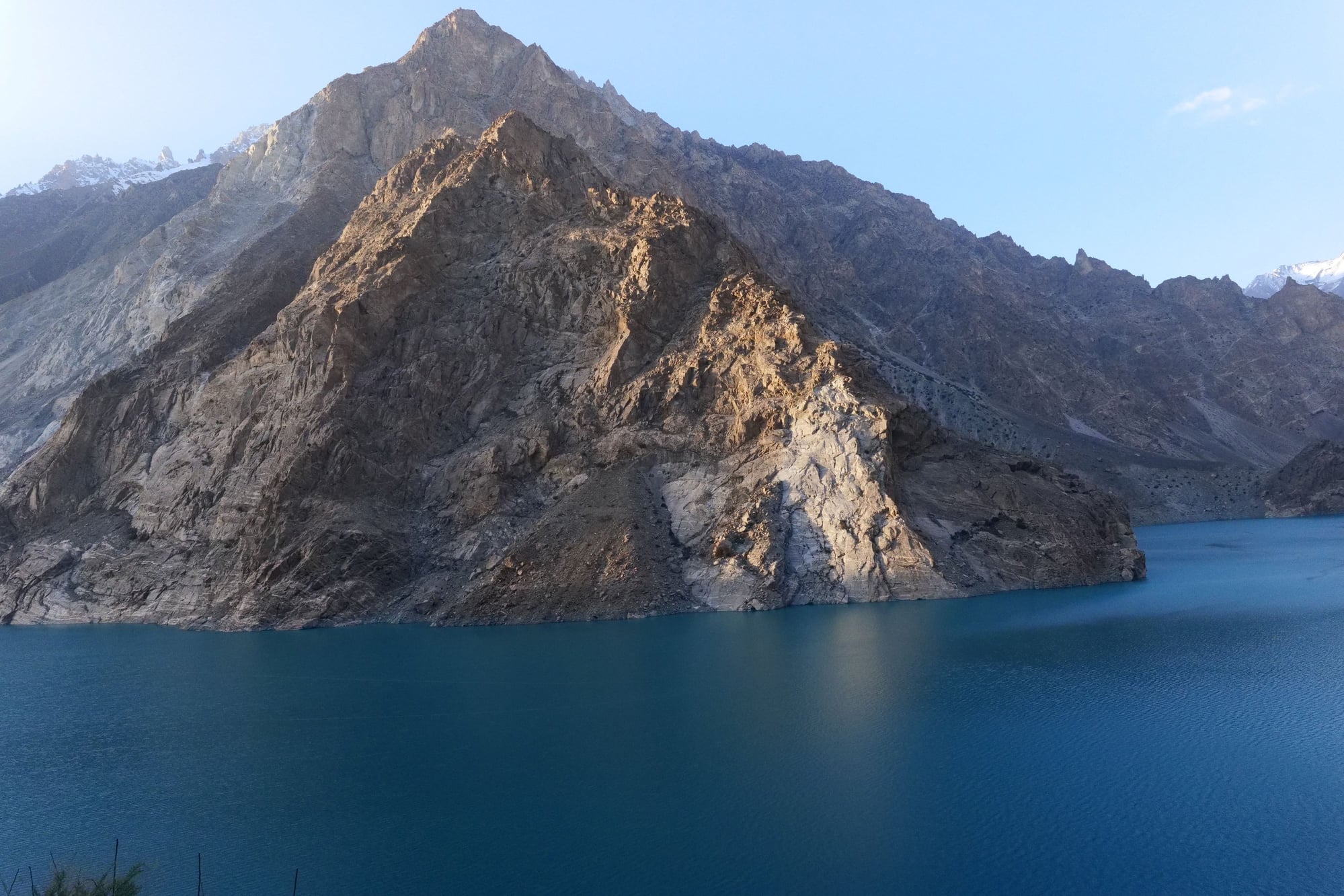
Attabad lake Hunza

pak China KKH

Attabad
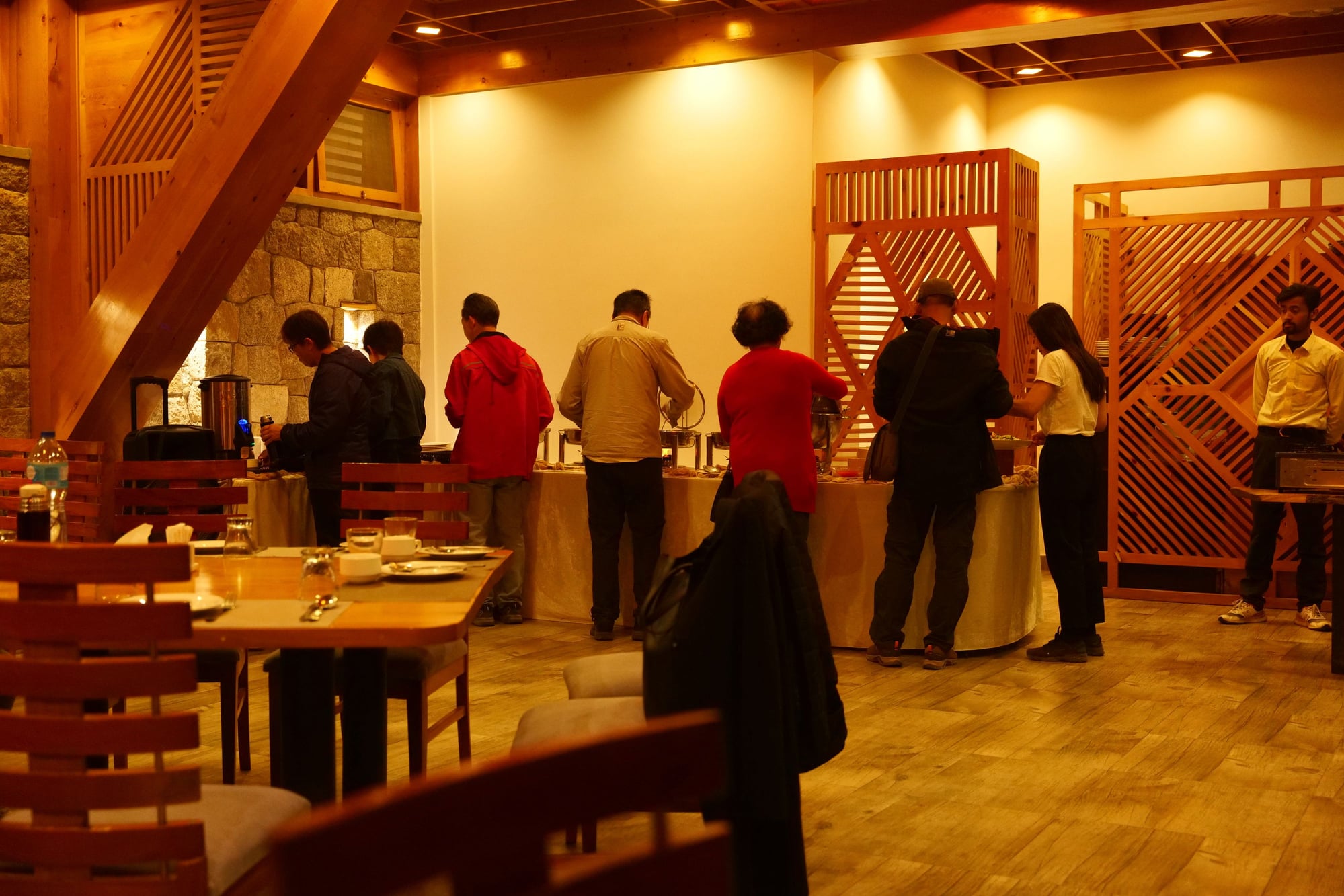
Famree

Famree room
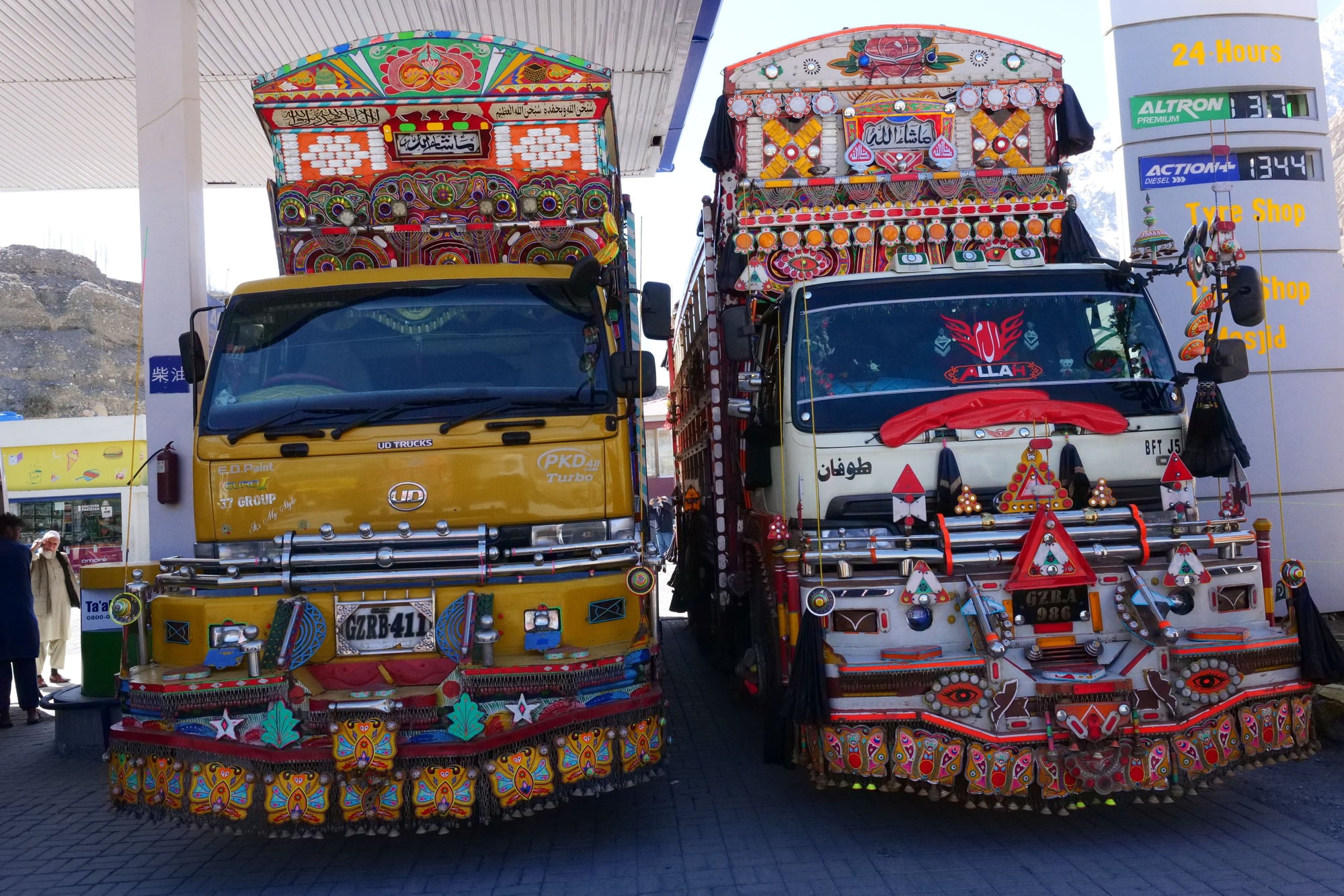
trucks
We then continued our journey to Attabad lake , a lake that was formed in 2010, after a massive landslide blocked the Hunza river and submerged several villages. The lake is about 21 kilometers long and 100 meters deep, and has a turquoise color. The lake is a popular tourist attraction, as it offers boat rides, jet skiing, and fishing. We reached the Famree resort, a luxury hotel on the banks of the lake, where we checked in and relaxed. We enjoyed the view of the lake and the mountains from our rooms, and had a delicious dinner at the hotel’s restaurant. We then retired to our beds, feeling happy and satisfied with our day’s adventure.
After breakfast, we decided to visit some of the nearby Buddhist sites that date back to the ancient Gandhara civilization, which flourished in this region from the 3rd century BCE to the 6th century CE. Gandhara was a center of Buddhism and Greco-Buddhist art, and many of its sculptures and monuments are preserved in museums and archaeological sites across Pakistan.
We drove down to the valley, passing through scenic villages. Our first stop was the Jahanabad Buddha, a giant rock carving of the Buddha that is located on a hillside near the village of Shakhorai. The carving is about 7 meters (23 feet) high and is considered one of the most important pieces of Buddhist art in South Asia. The carving was damaged by the Taliban in 2007, but was restored by an Italian-led team of experts in 2016. We were amazed by the skill and devotion of the ancient artists who created this masterpiece, and by the efforts of the modern restorers who brought it back to life.
We then continued our journey to the town of Madyan, which is famous for its trout farms and handicrafts. We visited one of the trout farms and enjoyed a fresh and tasty trout lunch. We also bought some souvenirs from the local shops, such as shawls, carpets, and wooden carvings.

swat village

water channel
From Madyan, we drove further to the town of Bahrain, which is situated at the confluence of the Swat and Daral rivers. Bahrain is a popular tourist spot for its natural beauty and cultural diversity. We visited the local bazaar, where we saw many old handicraft shops selling unique items made by the local people.
After spending some time in Bahrain, we headed back to the hotel, enjoying the sunset and the cool breeze along the way. We then retired to our comfortable rooms, feeling happy and fulfilled by our day’s adventure.
We learned a lot about the history and culture of Swat Valley, and its rich Buddhist heritage. We were impressed by the diversity and harmony of the people, and the beauty and tranquility of the nature.
We had a hearty breakfast at the hotel, and starated our journey to Chilas via the Shangla Pass, Behsam, and the Karakoram Highway. We boarded our comfortable bus and drove along the Swat River, enjoying the views of the mountains and the villages. After about one and half hour, we reached the Shangla Pass, a mountain pass that connects the upper and lower Swat valleys. The pass is about 2,000 meters (6,600 feet) above sea level and offers panoramic views of the surrounding peaks and valleys. We had a brief photo stop at the pass, and then continued our journey.

bridge

Indus and KKH

Indus and Kohistan valley

KKH

KKH kohistan

Chilas and indus

truck on KKH

swat kids
Our next stop was a small waterfall near the town of Alpuri, the headquarters of the Shangla District.The waterfall was a refreshing sight, and we took some pictures and enjoyed the cool breeze. We also had a chance to interact with some of the local people, who were very friendly and hospitable. They told us about their culture and traditions, which are influenced by the Pashtun, Kohistani, and Gujjar ethnic groups They also offered us some of their local delicacies, such as makai ki roti (corn bread) and lassi (yogurt drink).
We resumed our drive and reached a small old bridge over the Shangla River, which falls in to Indus river, which is one of the longest and most important rivers in Asia. The river originates in the Tibetan Plateau and flows through India, Pakistan, and China, before emptying into the Arabian Sea The river has been a cradle of civilization, and has witnessed many historical events and cultural exchanges We had another photo stop at the bridge, and admired the mighty river and its surroundings.
We then joined the Karakoram Highway, which is the highest paved international road in the world, running between Pakistan and China. The highway is also known as the Eighth Wonder of the World, because of the engineering marvel and the scenic beauty. The highway follows the course of the Indus River, and passes through the Kohistan Valley, which is a mountainous region with diverse flora and fauna The people of Kohistan are mostly tribal and conservative, and have their own language and customs
We drove along the highway for about four hours, and reached our destination of Chilas, a small town in the Gilgit-Baltistan region. Chilas is located on the bank of the Indus River, and is a gateway to the northern areas of Pakistan, such as Gilgit, Hunza, Skardu, and Nanga Parbat. Chilas is also famous for its ancient rock carvings and inscriptions, dating back to the 1st millennium BCE. We checked into our hotel, and had a delicious dinner. We then retired to our rooms, feeling tired but happy after a long and adventurous day.
The history of KKH is quite interesting and long. KKH stands for Karakoram Highway, which is the highest paved international road in the world, running between Pakistan and China1 It is also known as the Friendship Highway in China, and the Eighth Wonder of the World, because of the engineering marvel and the scenic beauty.
KKH was built by the governments of Pakistan and China, and it took almost 20 years (1959-78) to complete It was started in 1962 and was opened to the public in 19781 About 810 Pakistanis and about 200 Chinese workers died, mostly due to landslides and falls, while building the highway Over 140 Chinese workers who died during the construction are buried in the Chinese cemetery in Gilgit.
KKH traces one of the many paths of the ancient Silk Road, and connects the Pakistani provinces of Punjab and Khyber Pakhtunkhwa plus Gilgit-Baltistan with China’s Xinjiang Uyghur Autonomous Region It passes through or near the Pamirs, Hindu Kush, Kunlun Mountains, and Karakoram Range, and reaches a maximum elevation of 4,714 meters (15,466 feet) near Khunjerab Pass It also follows the course of the Indus River, and passes through the Kohistan Valley, which is a mountainous region with diverse flora and fauna
KKH is a popular tourist attraction, and has had a notable economic impact on the Uyghur, Tajik, and Kyrgyz peoples who inhabit the mountainous region It is also a part of the Asian Highway AH4, and a gateway to the northern areas of Pakistan, such as Gilgit, Hunza, Skardu, and Nanga Parbat.
We started our day with a delicious breakfast at the Chilas Shangrila hotel a cozy and comfortable place with a stunning view of the Indus river and the surrounding mountains. The hotel staff were very friendly and helpful, and the rooms were spacious and clean. We enjoyed the local cuisine and the fresh fruits and juices.
After breakfast, we boarded our van and headed towards Thalpan rock carving , a site of ancient art and history. Along the way, we admired the scenery of the Karakoram Highway, which is considered one of the most spectacular roads in the world.
We reached Thalpan rock carving, which is located just off the highway, near the town of Chilas. We were amazed by the petroglyphs that were scattered on the rocks, depicting animals, humans, stupas, Buddhas, and inscriptions in various languages. These carvings date back to the 6th century BC, and reflect the cultural and religious diversity of the region. We learned that this area was part of the ancient Silk Road, and that many travelers, merchants, and pilgrims left their marks on these rocks. We took some photos and marveled at the artistic skill and historical significance of these carvings.
We then continued our journey to Thalechi , a small village where we stopped for a tea break and a panoramic view of the Nanga Parbat. We saw the majestic Nanga Parbat , the ninth highest mountain in the world, looming over the horizon. Its snow-covered peak contrasted with the blue sky and the green valleys. We were lucky to have a clear day, and we could see the entire mountain range, of summit. We felt humbled by the beauty and the grandeur of nature. We also learned that Nanga Parbat means “Naked Mountain” in Urdu, and that it is also known as the “Killer Mountain” because of its notorious reputation for being one of the most difficult and dangerous mountains to climb. After the tea break, we resumed our drive and reached the Junction point of the three mightiest mountain ranges in the world: the Himalayas, the Karakoram, and the Hindu Kush. This is a unique place where these three ranges converge, and where the Gilgit river meets the Indus river. We could see the different directions and characteristics of each range, and we felt like we were standing at the crossroads of the world. We also learned that this point is considered a geological wonder, as it marks the collision of the Indian and Eurasian plates, which gave rise to these magnificent mountains.
We then proceeded to Gilgit city, the capital of Gilgit-Baltistan, and the largest city in the region. We had lunch at a local restaurant, where we tasted some of the specialties of the area, such as chapshoro, a meat-filled flatbread, and mamtu, a steamed dumpling. We also enjoyed the fresh trout fish from the river, and the apricot juice and jam, which are famous in Gilgit-Baltistan.
After lunch, we visited the Kargah Buddha, a 15-feet tall and 5-feet wide statue of Buddha, carved on a mountain at an altitude of around 150 feet from the ground. The sculpture dates back to the 7th century AD, and is a testament to the Buddhist heritage of the region. We learned that Gilgit was once a major center for Buddhism, and that many Chinese monks came to Kashmir through this route, to learn and to preach Buddhism. We also heard some of the local legends and myths about the Buddha, such as the story of the ogress Yashani, who was pinned to the rock by a saint or a shaman, to save the people from her tyranny.

Kargah Buddha

Kargah

Kargah Gilgit

Gilgit river

spring bloom
We then went to the Gilgit river , a tributary of the Indus river, and one of the main sources of water and livelihood for the people of Gilgit-Baltistan. The river originates from the Shandur lake, and flows through various districts of Gilgit-Baltistan, before joining the Indus river near the town of Juglot. The river is also a popular spot for fishing, rafting, and boating. We enjoyed the sight and the sound of the river, and felt refreshed by the cool breeze.
We then left Gilgit city and headed towards Nagar valley, one of the most beautiful and scenic valleys in Gilgit-Baltistan. The valley is home to many high mountain peaks, such as Rakaposhi, Diran, Golden Peak, and Rush Peak. The valley is also rich in culture and history, as it was once a princely state, ruled by the Mirs of Nagar for more than 1200 years. The people of Nagar speak Burushaski and Shina languages, and follow a mix of Sunni and Ismaili sects of Islam. The valley is also known for its handicrafts, such as carpets, shawls, and caps.
We stopped at the Rakaposhi view point , where we had a snack break and a breathtaking view of the Rakaposhi mountain, the 27th highest mountain in the world, standing at 7,788 meters. The name Rakaposhi means “Shining Wall” in the local language, and the mountain lives up to its name, as it reflects the sunlight and changes colors throughout the day. We were mesmerized by the sight of the mountain, and took many photos and videos.

Rakaposhi 7778 m

Rakaposhi view point

Nagar valley

Attabad lake Hunza

pak China KKH

Attabad

Famree

Famree room

trucks
We then continued our journey to Attabad lake , a lake that was formed in 2010, after a massive landslide blocked the Hunza river and submerged several villages. The lake is about 21 kilometers long and 100 meters deep, and has a turquoise color. The lake is a popular tourist attraction, as it offers boat rides, jet skiing, and fishing. We reached the Famree resort, a luxury hotel on the banks of the lake, where we checked in and relaxed. We enjoyed the view of the lake and the mountains from our rooms, and had a delicious dinner at the hotel’s restaurant. We then retired to our beds, feeling happy and satisfied with our day’s adventure.
Last edited by sinkara; Dec 14th, 2023 at 11:10 PM. Reason: pictures
#9
Original Poster
Join Date: Sep 2014
Posts: 11
Likes: 0
Received 0 Likes
on
0 Posts

Nanga Parbat

fairy Meadows Nanga Parbat, 8000+ m (courtesy Ehsan)
Day 4: Attabad, Passu Glacier, Borith lake, Gulmit village, Hussaini suspension Bridge
We started our day from the Famree resort, a cozy and comfortable hotel on the shores of the Attabad lake, which was formed by a massive landslide in 2010. The lake’s turquoise water contrasted with the brown mountains and the blue sky, creating a stunning scenery. We enjoyed a hearty breakfast at the hotel’s restaurant, which offered a variety of dishes from Pakistani and international cuisines.

Famree room view
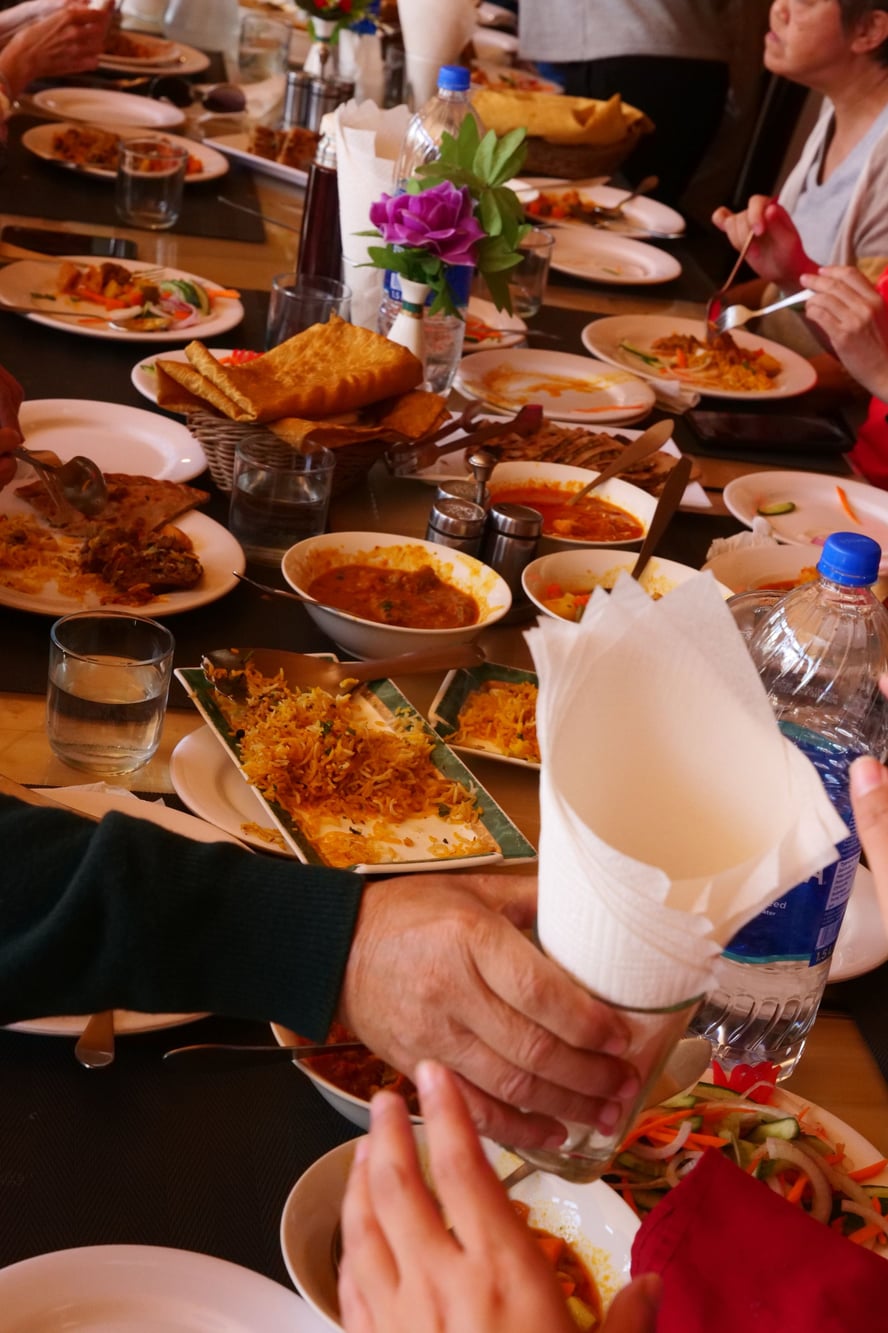
cuisine
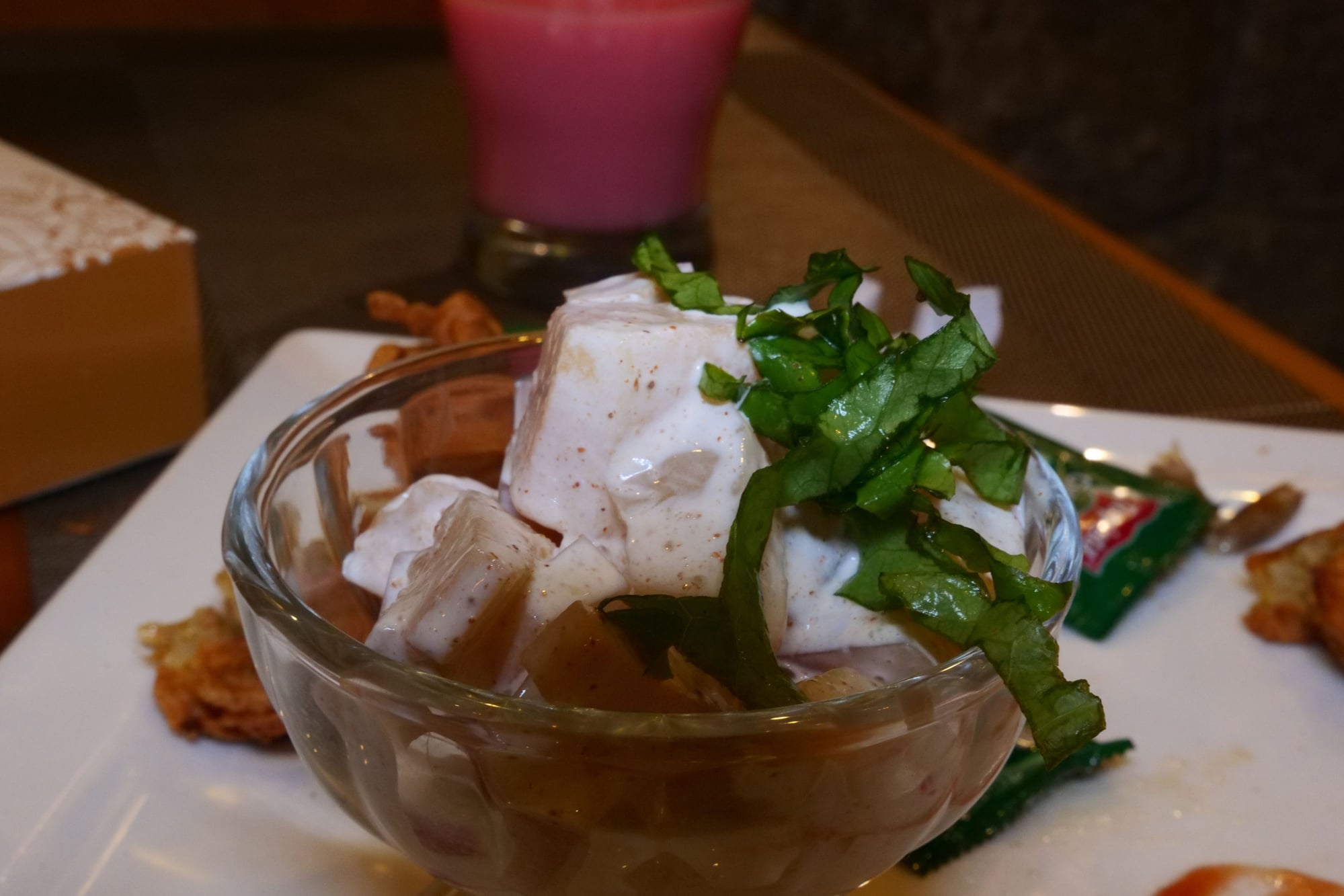
famree dishes

offerings
Our first destination was the Hussaini suspension bridge, which is known as one of the most dangerous bridges in the world. The bridge is made of wooden planks and ropes, with large gaps between them. It crosses the Hunza river, which flows from the glaciers of the Karakoram range. The bridge swayed and creaked as we walked on it, making us feel both thrilled and terrified. We could see the majestic peaks of the Karakoram, such as Shispare Sar and Passu Sar, looming over us.
The bridge offers a thrilling and adventurous experience for those who dare to cross it, as well as a stunning view of the surrounding mountains and glaciers. The bridge is also a testament to the ingenuity and resilience of the local people, who built it with limited resources and maintain it with their own efforts.
Some of us managed to cross the bridge, while others preferred to stay on the safer side. We took some photos and videos of this adventurous experience, and then headed back to our van.

Hussaini suspension bridge

Husaini bridge and passu cones
Next, we drove to the Borith lake, a beautiful saltwater lake tucked between two glaciers: the Passu Gar glacier and the Gulkhin glacier. The lake’s green-blue water sparkled in the bright sunlight, and we could see ducks and birds swimming on the surface. We rented a boat and rowed across the lake, enjoying the views of the surrounding mountains and glaciers.
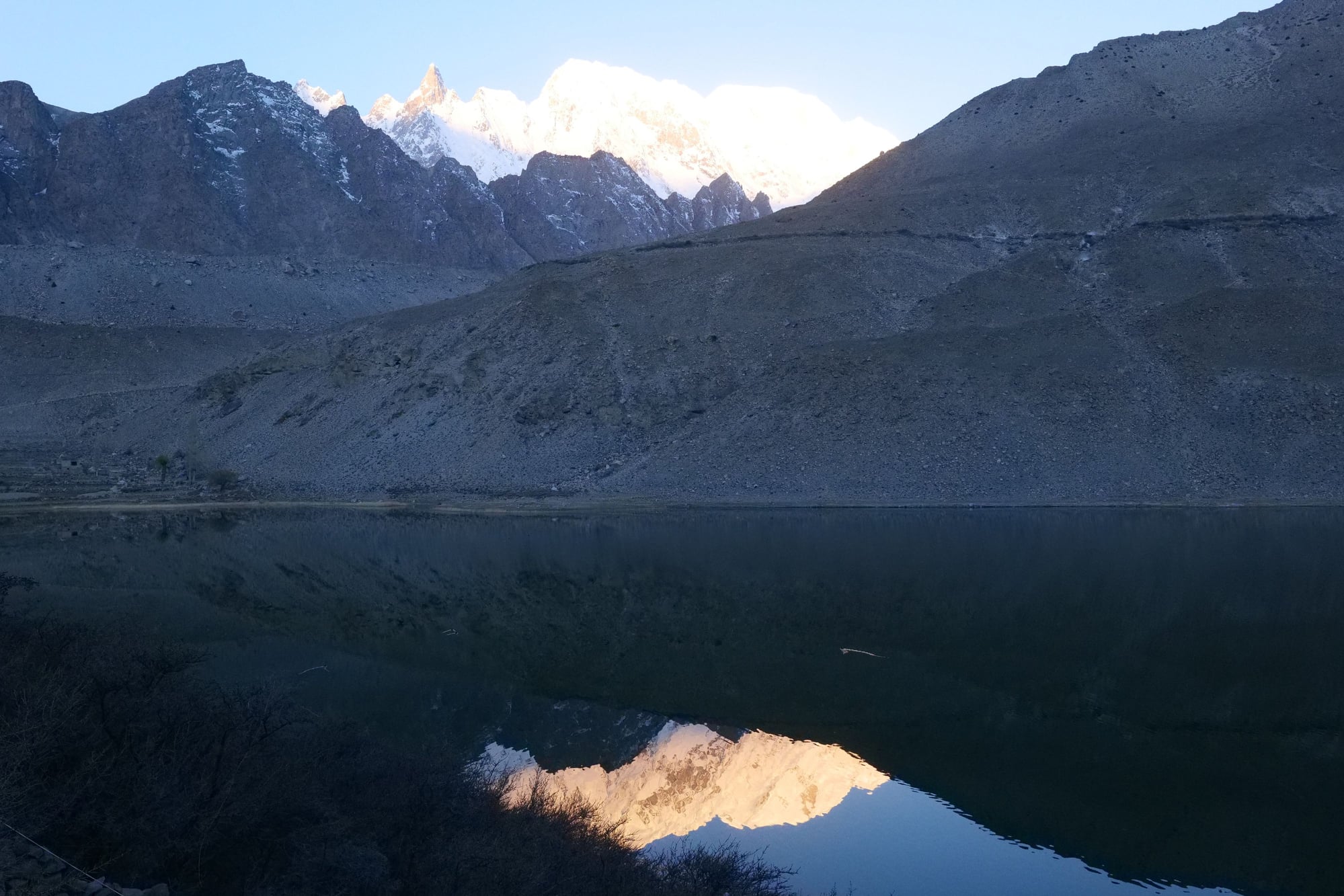
Borith lake

Borith lake hunzaAfter having lunch at a Borith lake restaurant, we decided to hike to the Passu glacier, which is one of the longest and most impressive glaciers in the region. We followed a trail that led us to the moraine of the glacier, where we had to scramble over loose rocks and boulders. The trek was easy and rewarding, as we got to see the glacier up close and admire its ice formations and crevasses. The Passu glacier is a major tributary of the Batura glacier, the fifth-longest glacier in the world outside of the polar regions. The Passu glacier is around 19 kilometers long and covers an area of approximately 56 square kilometers. The glacier is surrounded by towering peaks, including Passu Sar, Tupopdan Peak, and Shisper Peak. The glacier is an important source of water for the surrounding communities, and it plays a vital role in the local ecosystem. However, the glacier is also experiencing the effects of climate change, and has been shrinking over the past few decades.
We also had a panoramic view of the valley and the Hunza river below. We spent some time on the glacier, taking photos and feeling the cold breeze. Then we retraced our steps and returned to our van.
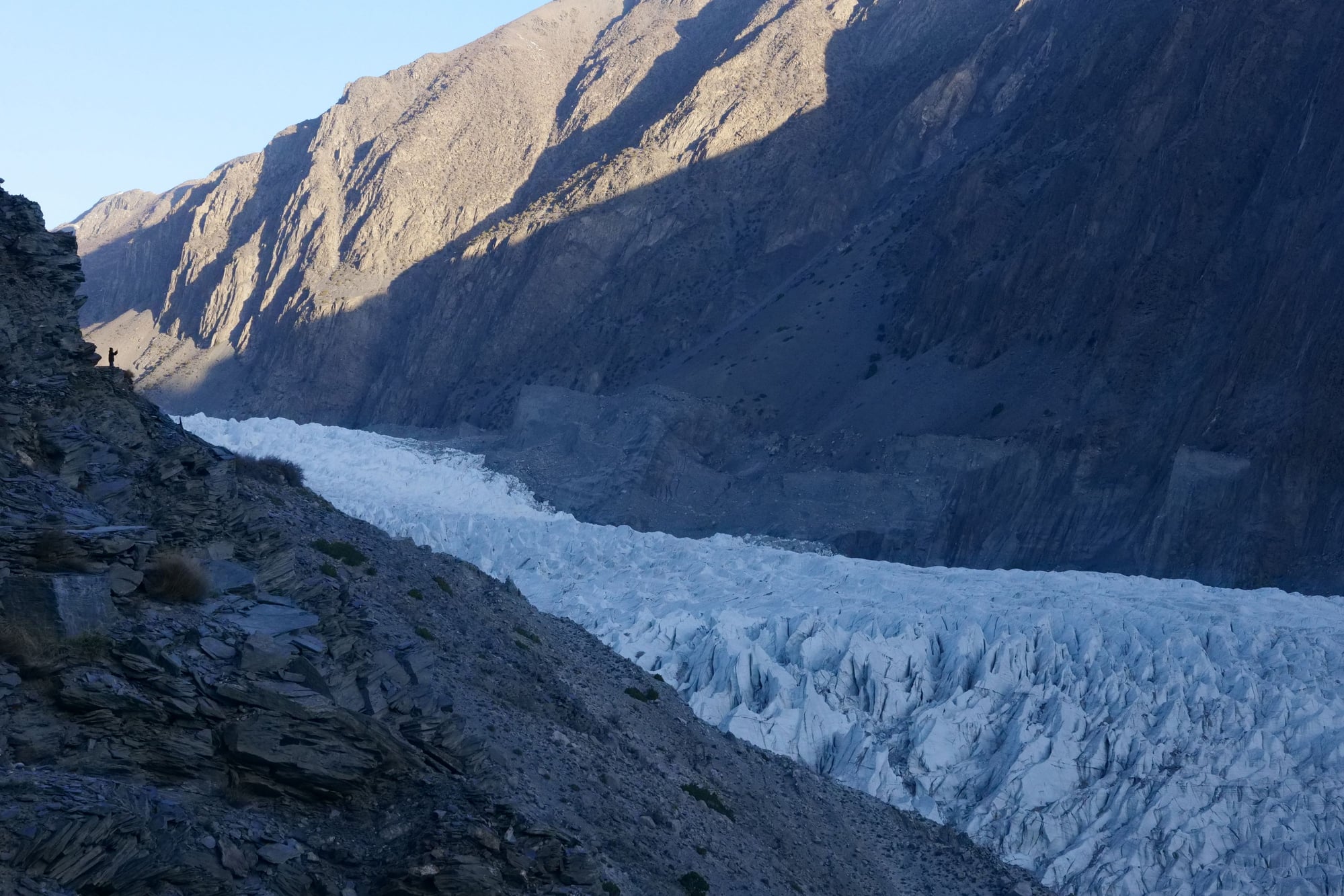
passu glacier
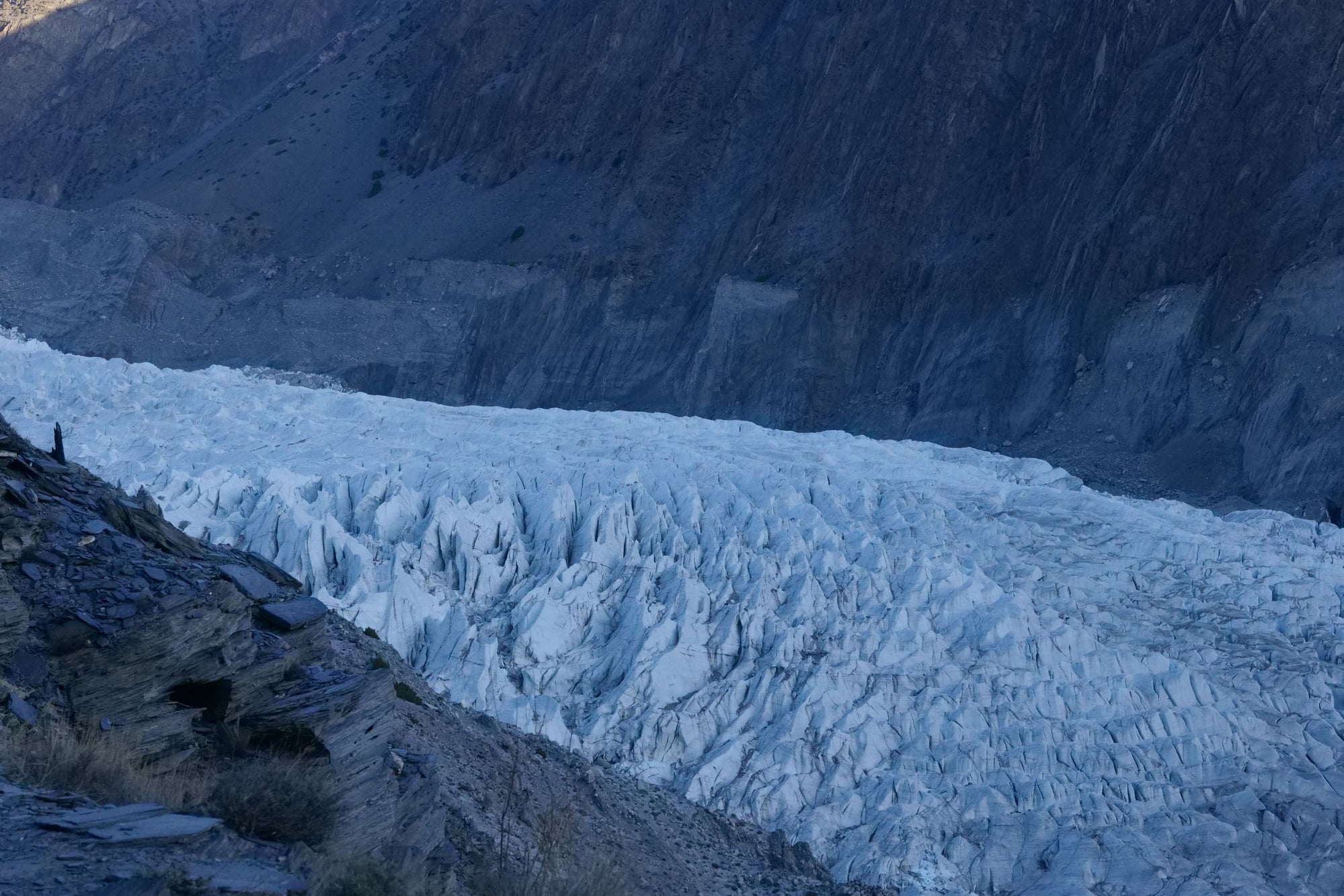
passu glacier
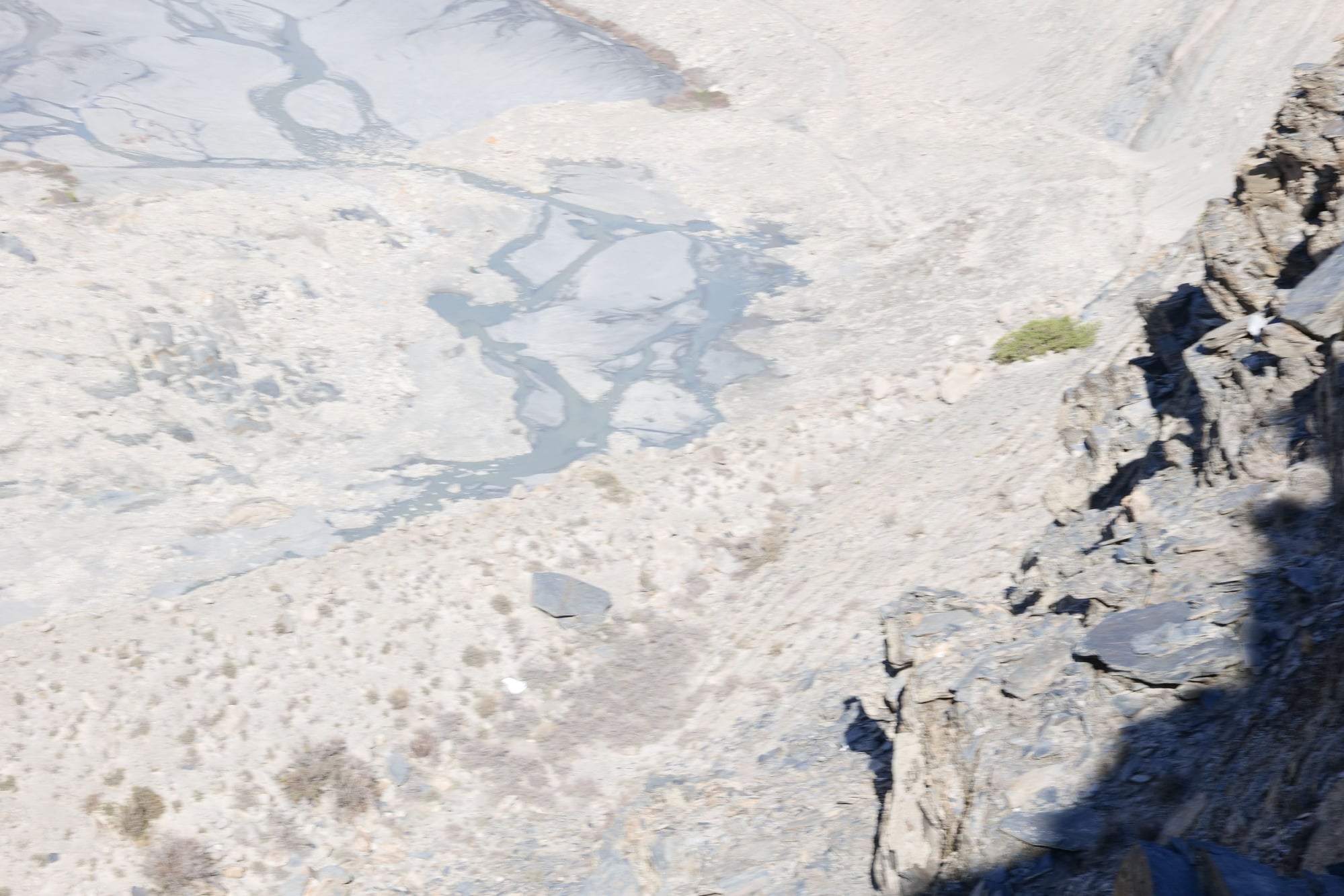
passu glacier waterThen we visited the Koragh weaving center, a women-run carpet weaving center in Gulmit, where we saw the local artisans making traditional carpets with intricate designs and patterns. We learned about the history and culture of the Hunza valley, and bought some carpets as souvenirs. We were also fortunate to have Ehsan as our guide, who was very informative, entertaining, and humble. He always liked to serve people and make them happy. He told us interesting stories about the places we visited, the history and culture of the region, and his own experiences. He was very good at getting along with the local people, and he introduced us to some of them. He also kept us busy with various activities, such as games, quizzes, and jokes. He was one of the best photographers of the region, and he took amazing pictures of us and the scenery. He took us to mingle with the people and visit their homes, where we saw their traditional crafts and artifacts. He was very knowledgeable and friendly, and we enjoyed his company throughout the trip.
Our last stop was the Passu village, where we visited the famous Passu cones, also known as Tupopdan or Passu Cathedral. These are a group of pointed peaks that rise above the village, creating a striking landscape. The cones are one of the most photographed landmarks of the region, and we could see why. They looked like a natural sculpture, carved by the forces of nature.
Passu is a village in the upper Hunza region, situated on the banks of the Hunza river. Passu is famous for its spectacular scenery, especially the Passu cones, a group of jagged peaks that rise above the village. Passu is also the gateway to the Passu glacier, one of the longest and most impressive glaciers in the region.
We also explored the village, which is inhabited by the Wakhi people, who are Ismaili Muslims. We met some friendly locals, who invited us to their houses and offered us tea and apricots. We learned about their lifestyle and traditions, and admired their hospitality.
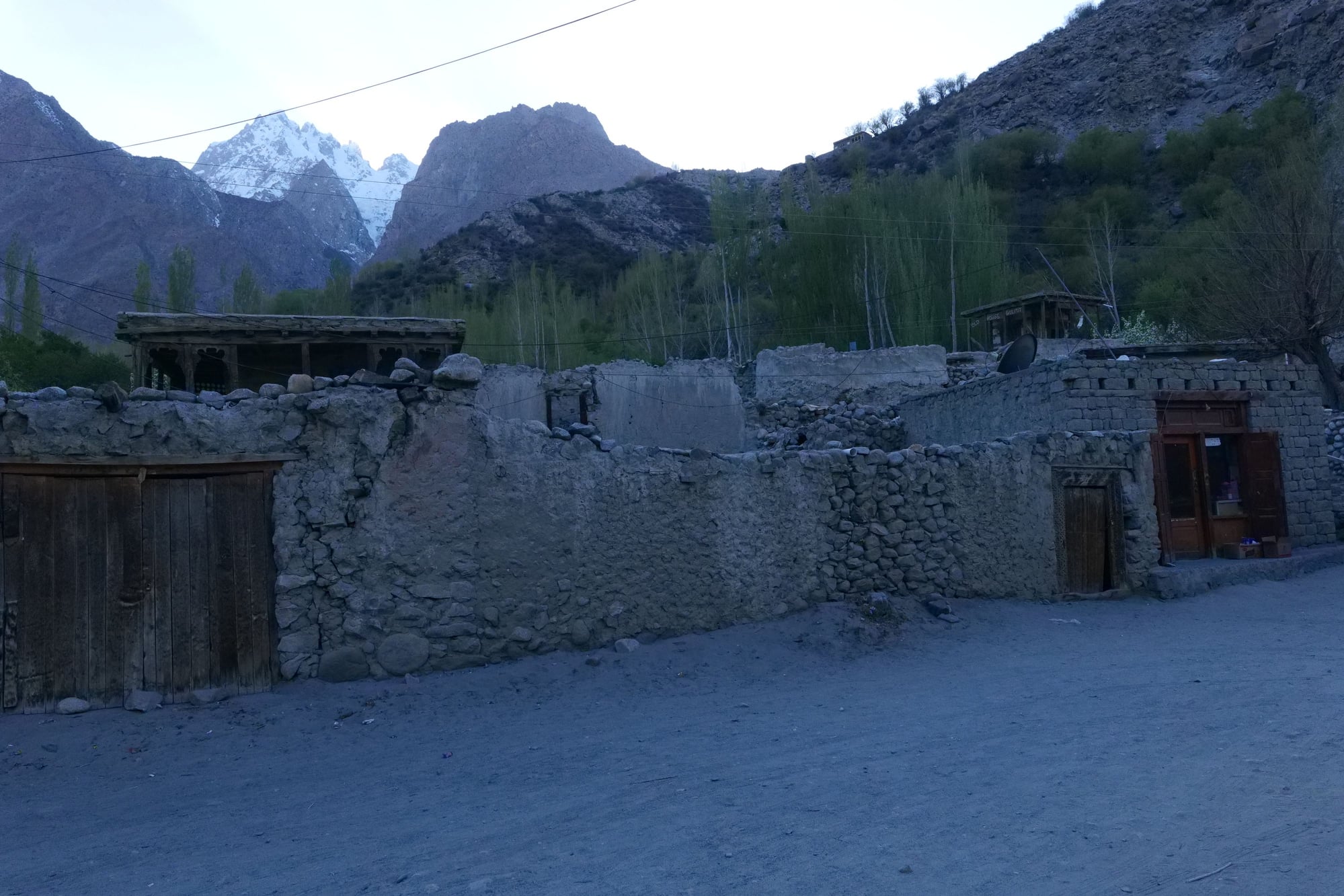
Gulmit village
The Hunza valley is a land of natural beauty, cultural diversity, and historical significance. Located in the Gilgit-Baltistan region of northern Pakistan, the Hunza valley is bordered by the Karakoram, Hindu Kush, and Himalayan mountain ranges. The valley is home to several ethnic groups, such as the Burusho, Wakhi, and Shina, who have their own languages, traditions, and religions. The Hunza valley has a rich history, dating back to the ancient times when it was part of the Silk Road, a network of trade routes that connected Asia, Europe, and Africa. The valley was ruled by the Mirs of Hunza, who were known for their bravery and resistance against foreign invaders. The Hunza valley became part of Pakistan in 1974, after a peaceful integration.

spring hunza
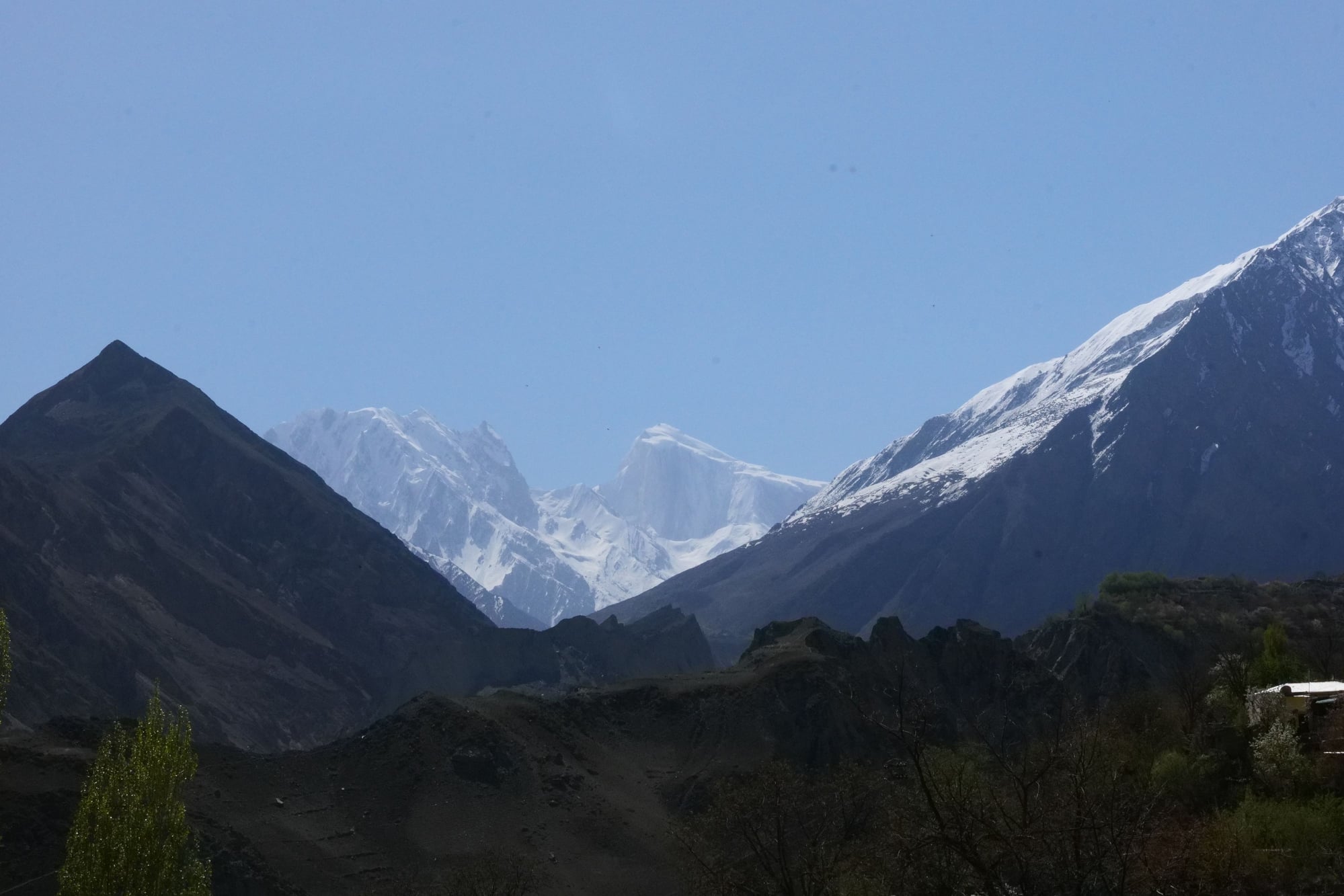
Golden peak view
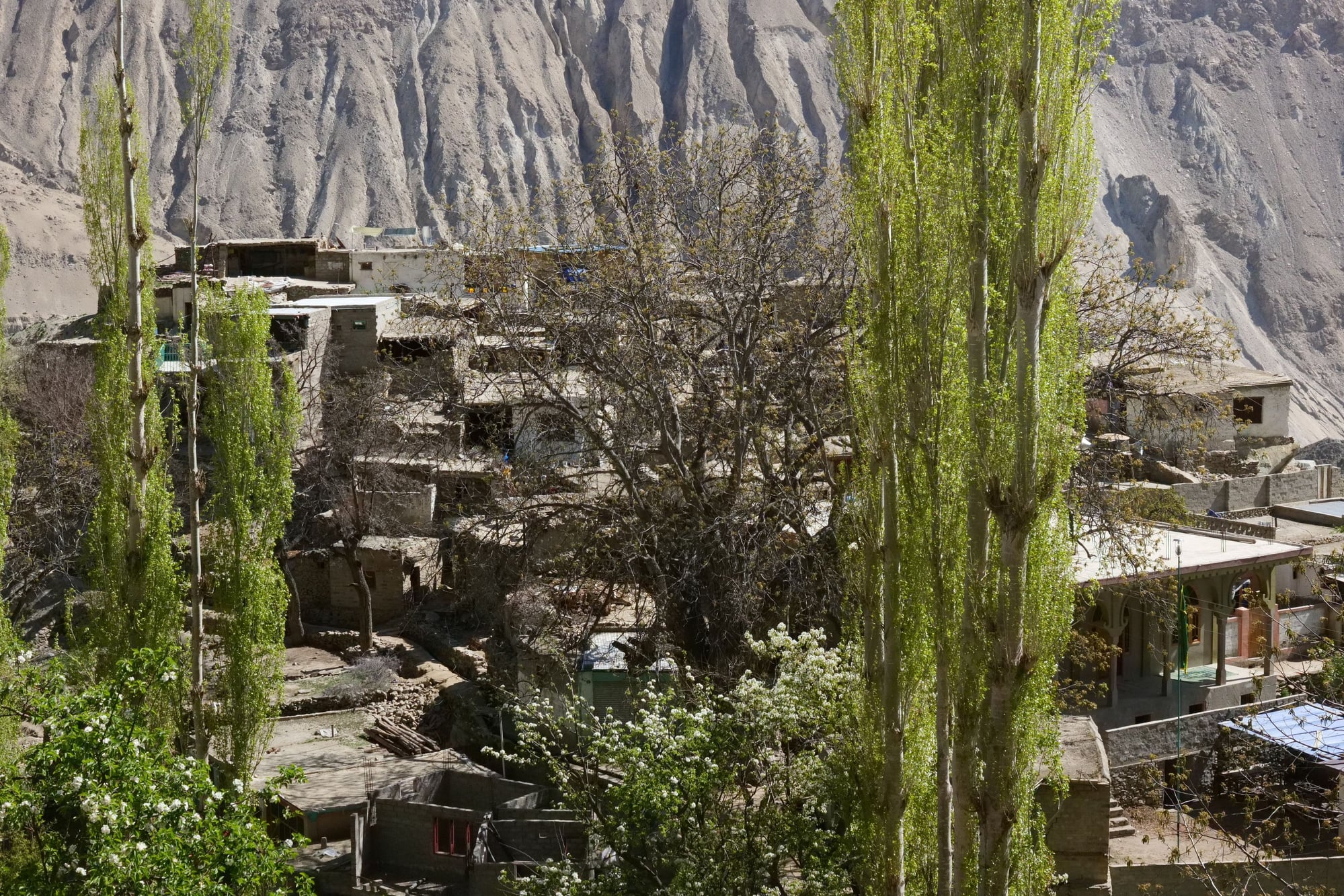
Gulmit village

spring time
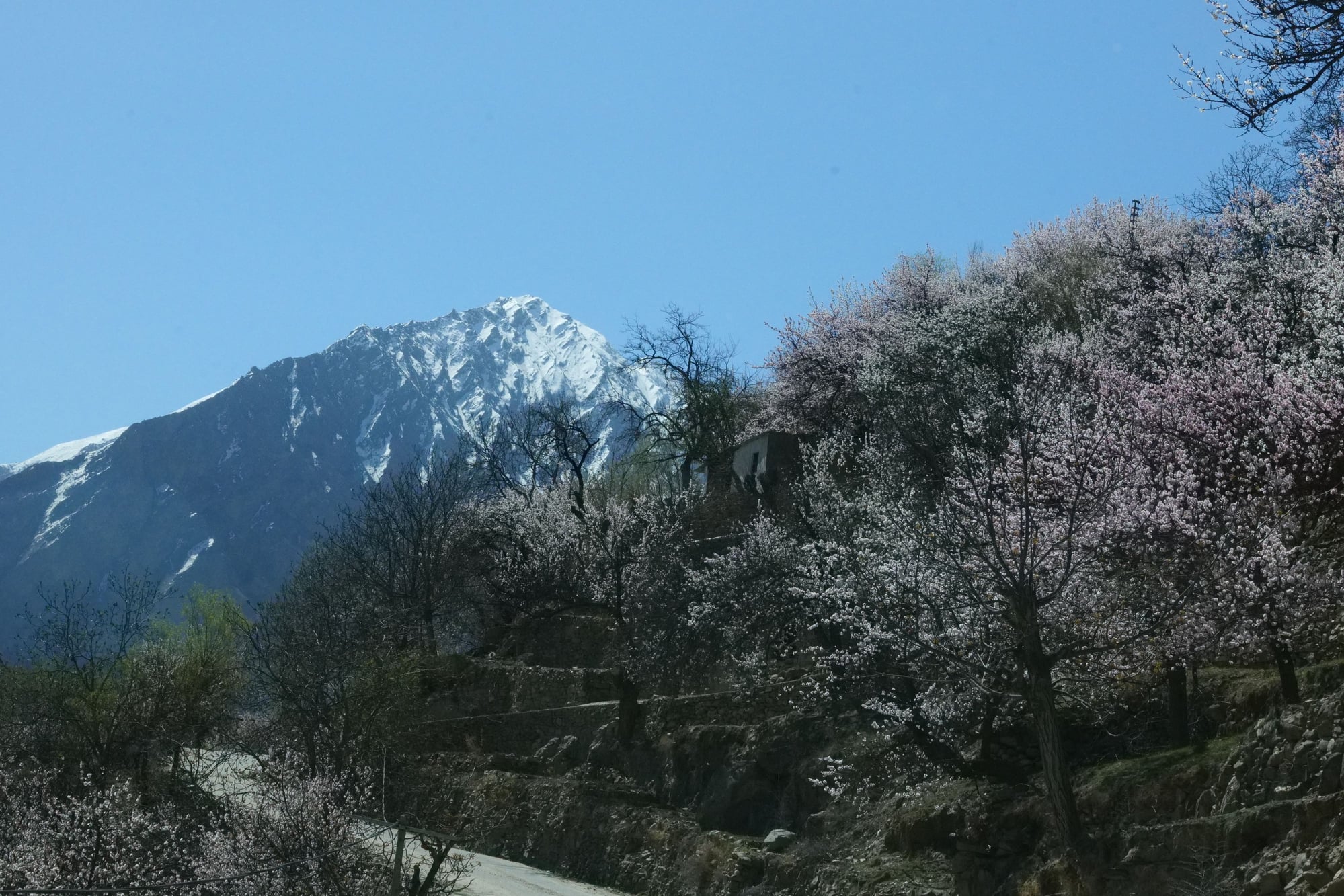
spring time
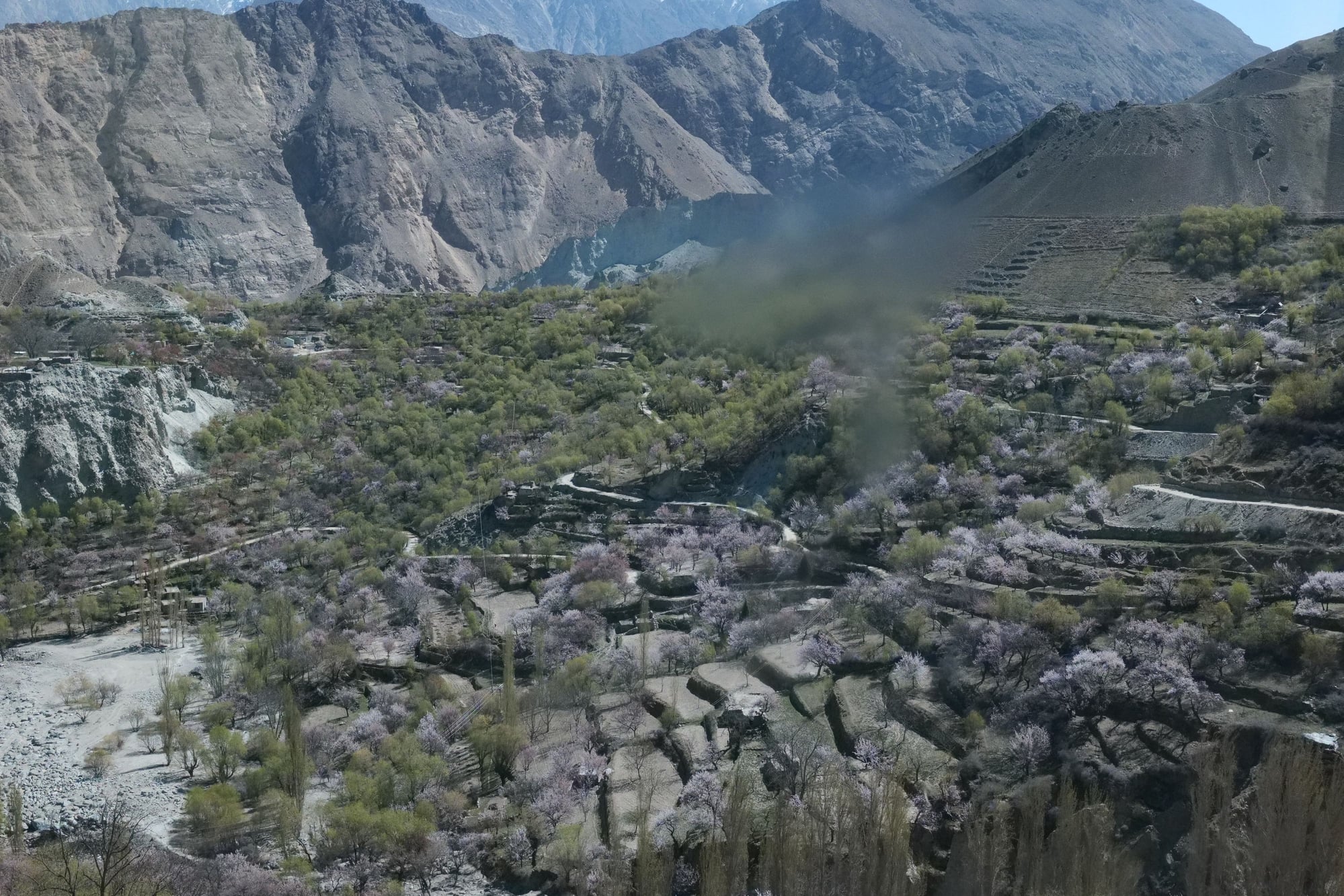
Hunza fields
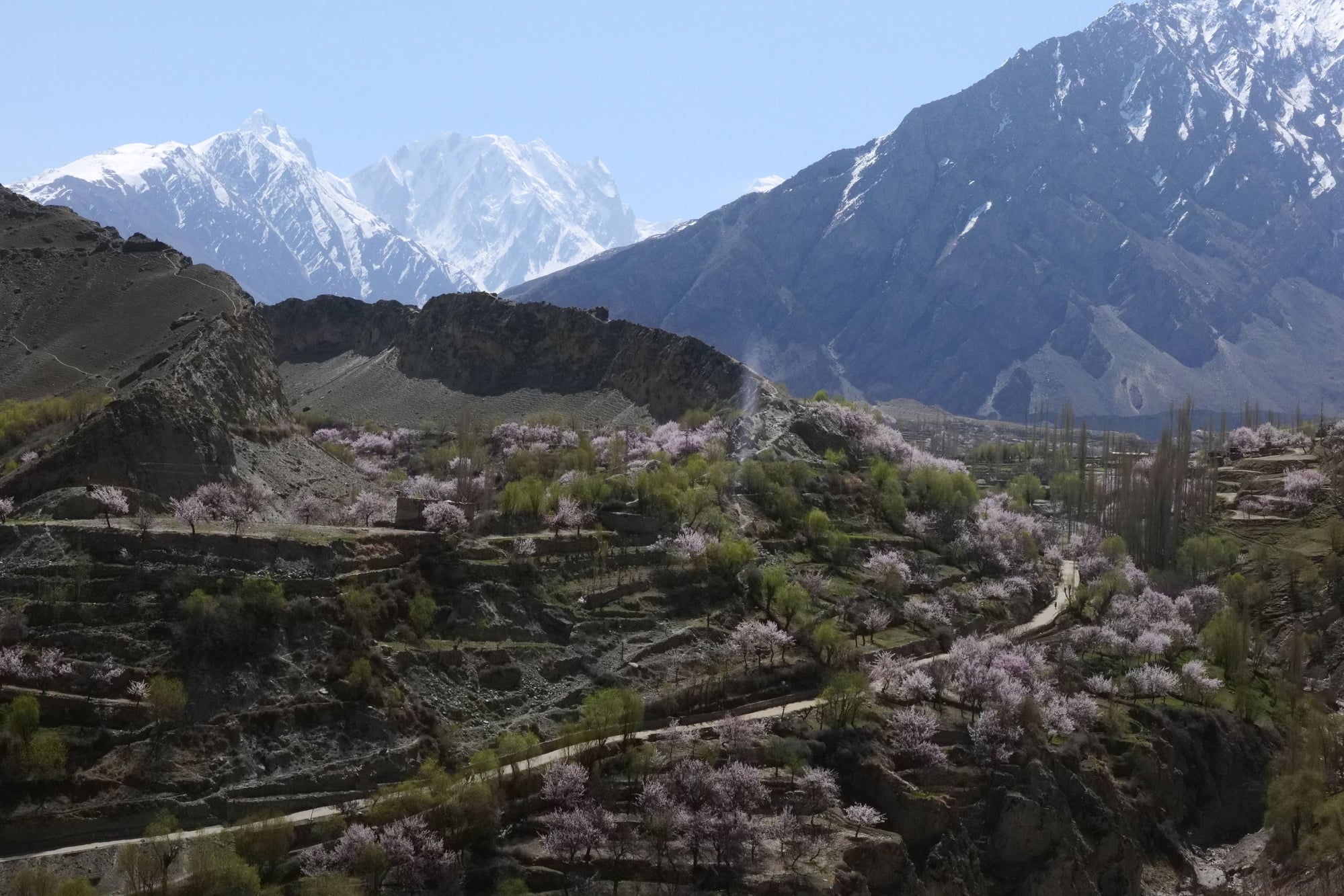
Hunza spring

Hunza river (courtesy Ehsan)
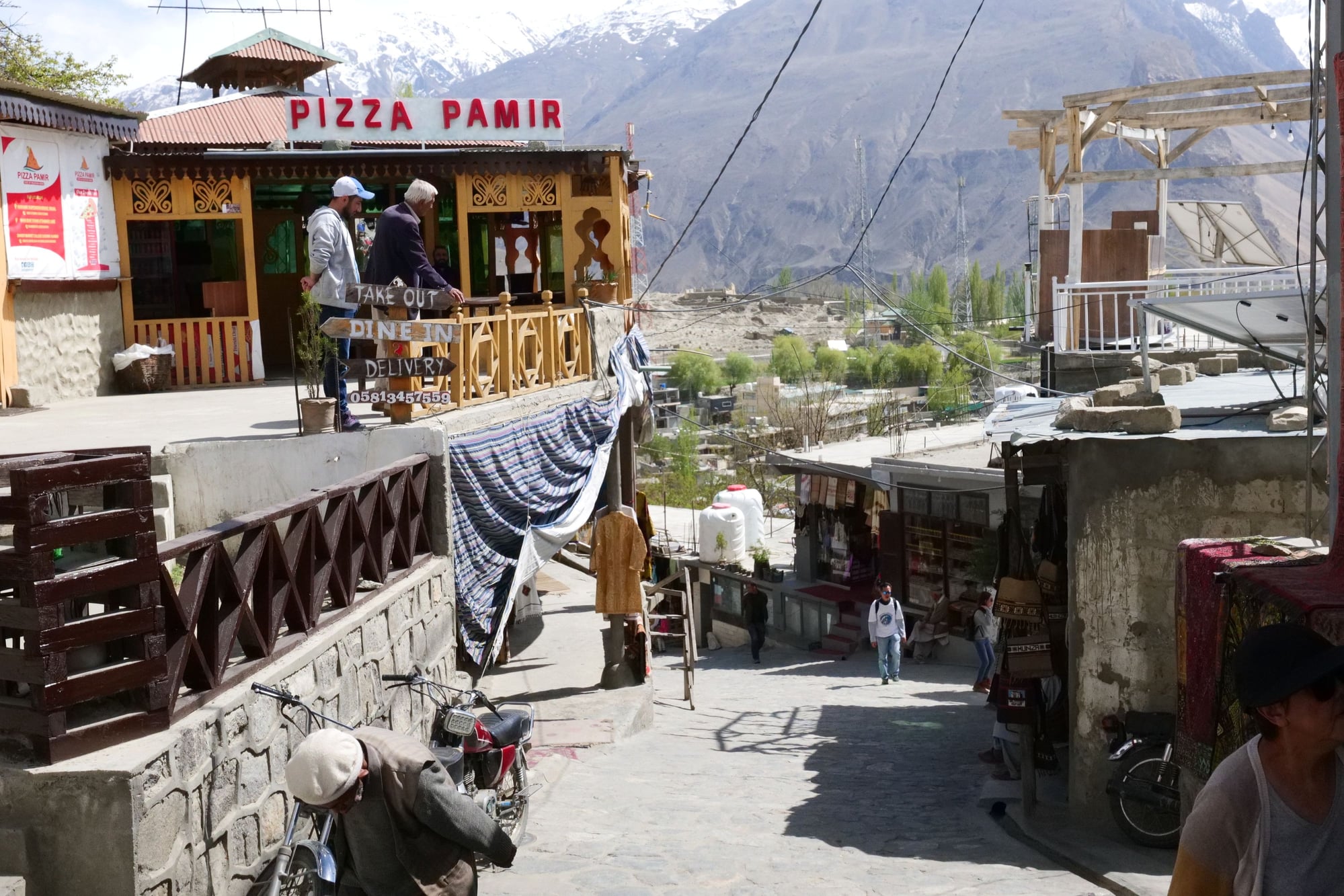
local bazar

Hunza view summer(courtesy Ehsan)

local homes

Hunza summer (courtesy Ehsan)
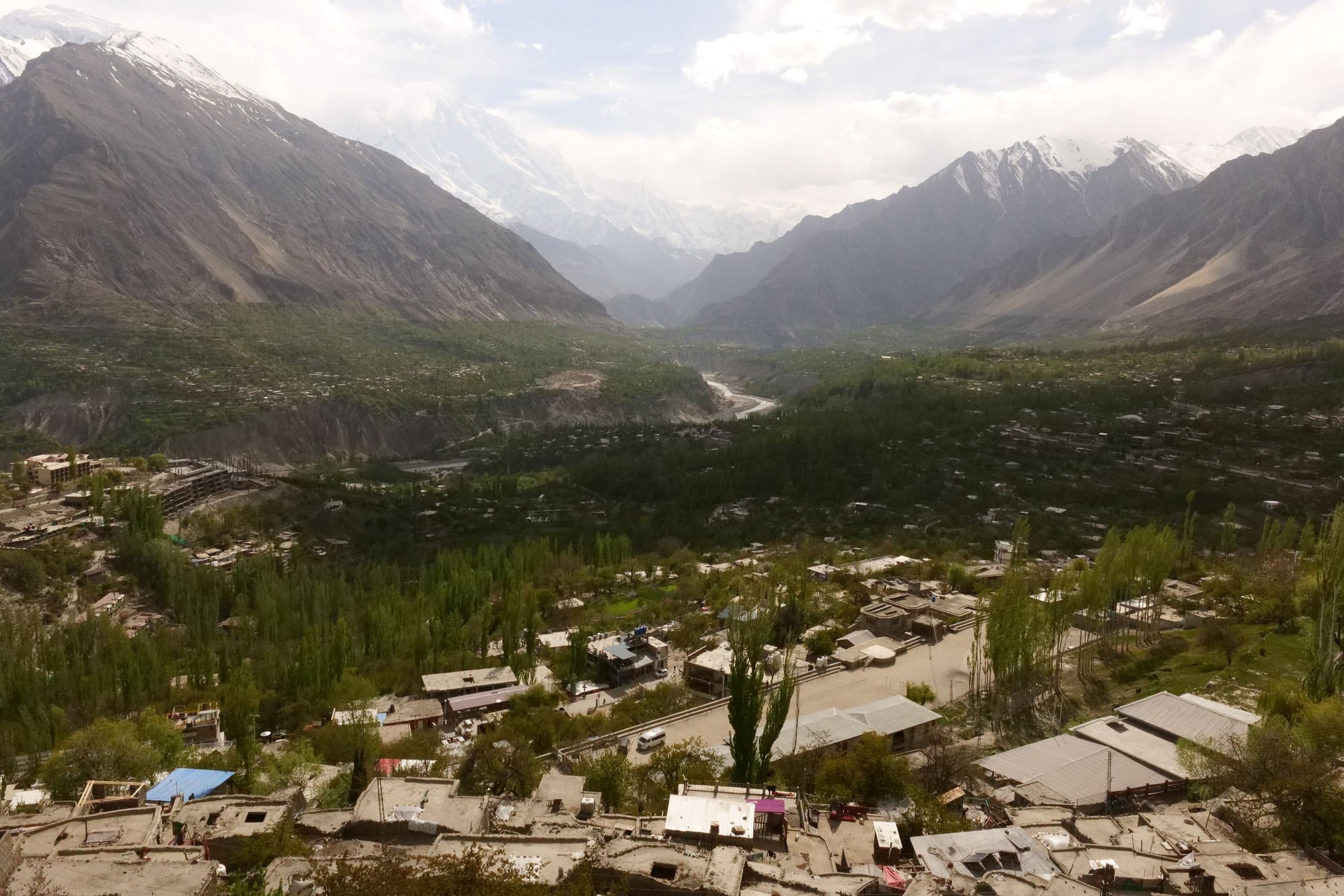
Hunza view summer (courtesy Ehsan)
#10
Join Date: Jan 2008
Posts: 7,862
Likes: 0
Received 0 Likes
on
0 Posts
That spring bloom shot...sigh.......and I'm glad that you included that photo showing the armed guard/cop/soldier. The realities of travel must be part of the process, the reportage---good for you Sinkara!
I am done. the end.
I am done. the end.
#12
Fabulous report and photos. Really enjoyed my armchair journey, appreciate the effort you put in to describing the background information.
I got a chuckle out of a couple of seemingly, to me, incongruous signs in your photos: "Rakaposhi Zipline" and "Pizza Pamir", but guess I should not be surprised.
A great book about the region is Where Four Worlds Meet by Fosco Maraini. It's ostensibly a mountaineering book, but the American Alpine Club says, "...in Maraini's book the climbing of Saraghrar is secondary to a much greater theme—the chronicle, past and present, of the world’s great blend of civilizations. ... every stone of which was "soaked in history” in a land where the four worlds of Buddhism, Communism, Islam, and Hinduism meet."
Maraini is one of the better writers and photographers of the genre.
I always hoped to get there, but it never happened so thanks for your report.
I got a chuckle out of a couple of seemingly, to me, incongruous signs in your photos: "Rakaposhi Zipline" and "Pizza Pamir", but guess I should not be surprised.
A great book about the region is Where Four Worlds Meet by Fosco Maraini. It's ostensibly a mountaineering book, but the American Alpine Club says, "...in Maraini's book the climbing of Saraghrar is secondary to a much greater theme—the chronicle, past and present, of the world’s great blend of civilizations. ... every stone of which was "soaked in history” in a land where the four worlds of Buddhism, Communism, Islam, and Hinduism meet."
Maraini is one of the better writers and photographers of the genre.
I always hoped to get there, but it never happened so thanks for your report.
#13
Join Date: Mar 2014
Posts: 4,723
Likes: 0
Received 0 Likes
on
0 Posts
What a fascinating trip you took! Love your report and photos! Especially about the Karakorum Highway, which brought back memories of our trip to Xinjiang Province in China in 2006. We took a trip up the Karakorum Highway in a private van. We hired a driver and guide. Three of us (me, my husband and daughter). That was the most unique, different, and exotic place I've visited. The Sunday Market in Kashgar is one of my fondest memories. I know I won't make it to Pakistan so am really enjoying being an armchair traveler, as Nelson says. How many people were in your tour group? What countries are they from?
Love the springtime scenery, the colorful trucks, the mountains, and the food!
Love the springtime scenery, the colorful trucks, the mountains, and the food!
#14
Join Date: Dec 2015
Posts: 5
Likes: 0
Received 0 Likes
on
0 Posts
thank you immensely for sharing your captivating trip report and the breathtaking pictures of your adventure in Pakistan. Your detailed account has left me in awe of the country's natural beauty and cultural richness.
I have been contemplating my next travel destination, and after reading thisreport, Pakistan has firmly captured my attention. The landscapes you described, suchas Hunza valley, KKH, sound like they offer a perfect blend of adventure and serenity.
The insights you provided are invaluable for someone like me who is considering a trip to Pakistan. Your experiences have truly inspired me to step out of my comfort zone and explore this remarkable country.
I have been contemplating my next travel destination, and after reading thisreport, Pakistan has firmly captured my attention. The landscapes you described, suchas Hunza valley, KKH, sound like they offer a perfect blend of adventure and serenity.
The insights you provided are invaluable for someone like me who is considering a trip to Pakistan. Your experiences have truly inspired me to step out of my comfort zone and explore this remarkable country.







